The wolf cut has taken the hair world by storm, combining the wildness of a mullet with the soft layers of a shag for a perfectly undone look that’s equal parts edgy and feminine. It’s no wonder this versatile style has become a social media sensation, with millions of TikTok videos showcasing various interpretations of this rebellious yet wearable cut. The wolf cut offers that coveted “I woke up like this” vibe while actually requiring minimal styling effort just some texturizing spray and maybe a quick zhuzh with your fingers. Weather you’re looking to completely transform your look or just add some lived-in texture to your current style, there’s a wolf cut variation that’ll work for your hair type, face shape, and personal aesthetic.
Let me walk you through 48+ stunning wolf cut ideas that’ll have you running to your stylist with screenshots in hand. These cuts range from subtle and office-appropriate to bold statement-making looks that’ll turn heads wherever you go. The beauty of the wolf cut lies in its adaptability it works on straight, wavy, curly, and coily hair, plus it can be tailored to any length from pixie-adjacent to flowing mermaid locks. Each version offers that signature disconnected layering that creates natural volume at the crown while maintaining movement and texture throughout the lengths. Ready to unleash your inner wolf? Let’s dive into these gorgeous interpretations that might just inspire your next hair transformation.
1. Classic Mid-Length Wolf Cut

The classic mid-length wolf cut features choppy layers that start around the crown and cascade down to create that signature mullet-shag hybrid. This versatile length hits just below the shoulders, making it perfect for those wanting to test the wolf cut waters without going too short or maintaining too much length. The beauty of this cut is how it frames the face with wispy bangs that blend seamlessly into the layers, creating a soft yet edgy frame around your features. It works amazingly well on slightly wavy hair types where the natural texture enhances the lived-in, effortless vibe that defines the wolf cut aesthetic.
This timeless interpretation of the wolf cut requires minimal styling just some texturizing spray and perhaps a quick blast with a diffuser to enhance your natural texture. The way the layers are cut creates natural volume at the crown without the need for teasing or excessive product, which is why so many busy women are gravitating toward this low-maintenance style. You’ll notice how the shorter pieces around the face create movement, while the longer layers maintain that coveted disconnected look that gives the wolf cut its distinctive character. For daily styling, simply embrace your natural texture or add some loose waves with a curling wand for a more polished take on this deliberately disheveled style.
2. Short Wolf Cut with Curtain Bangs
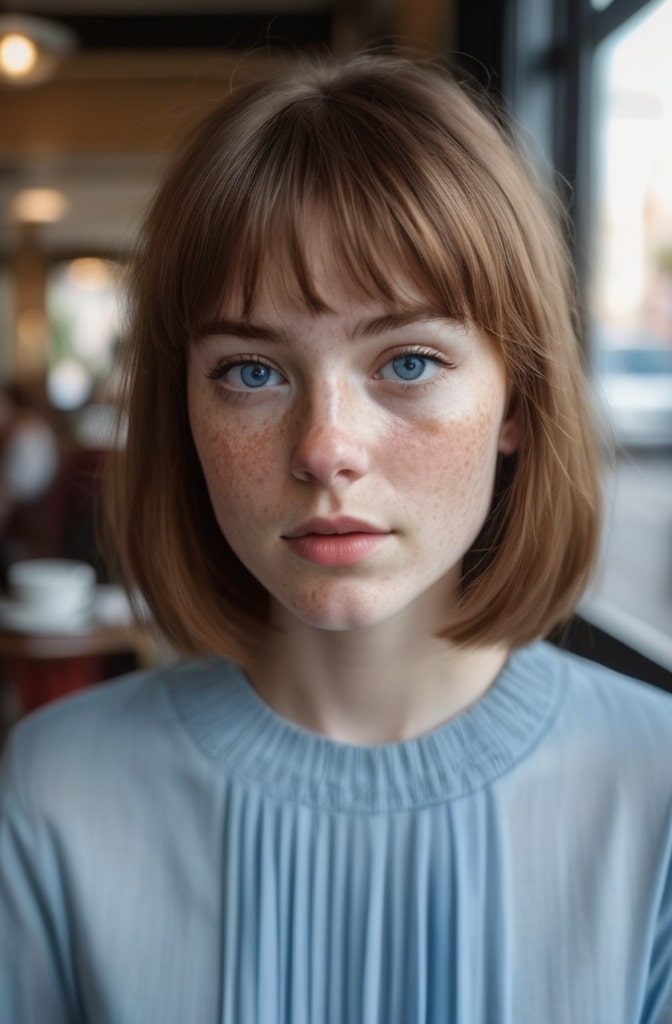
The short wolf cut paired with curtain bangs delivers maximum impact with minimal length, proving you don’t need long locks to rock this trending style. This bold interpretation typically sits around chin to collarbone length, with heavily layered pieces that create a mushroom-like silhouette with plenty of volume on top and textured, wispy ends. Curtain bangs complete the look by framing the face beautifully, opening up around the cheekbones and blending seamlessly into the rest of the cut’s layers. This combination is especially flattering for heart-shaped and oval faces, as it draws attention to the eyes and softens the forehead.
What makes this version so appealing is its youthful, rockstar energy combined with surprising versatility. The short length makes styling quick and easy most mornings you can just mist with texturizing spray, scrunch a bit, and be out the door lookin’ absolutely fabulous. For those with straighter hair, a flat iron can actually enhance this cut by creating slight bends in the layers rather than uniform curls, emphasizing the disconnected nature of the style. Many women find this shorter wolf cut variation liberating, as it offers that perfect balance between structured enough for professional settings yet edgy enough to express personality and style. Plus, it grows out beautifully, gradually transforming into a mid-length wolf cut without any awkward stages.
3. Long Wolf Cut for Thick Hair

The long wolf cut transforms thick, heavy hair into a cascade of dynamic layers that remove bulk while maintaining impressive length, typically falling below the bra strap. This variation works wonders for those blessed with dense locks who want movement without sacrificing their length, as the strategic layering prevents that weighed-down appearance that often plagues thick-haired individuals. The top layers create height and volume at the crown, while the disconnected longer pieces maintain that signature wolf cut silhouette with plenty of texture throughout. For thick-haired beauties, this cut is literally life-changing—suddenly all that hair becomes manageable without extreme thinning that can sometimes make thick hair look stringy.
Styling this lengthy version often requires less effort than you’d expect, as the natural weight of thick hair helps enhance the cut’s intentionally messy structure. A bit of mousse scrunched into damp hair before air-drying or diffusing will enhance natural texture, while those seeking more definition might add some loose waves with a large-barrel curling iron just through the mid-lengths. One of the best advantages of this variation is it’s amazing versatility it can be worn wild and voluminous for nights out or smoothed into a sleek ponytail that still showcases the face-framing layers during workdays. Heavy-haired women who’ve struggled with flat, lifeless cuts will find this style particularly refreshing, as it celebrates rather than fights against natural density, creating a waterfall of textured layers that move beautifully with every head turn.
4. Curly Wolf Cut with Bangs
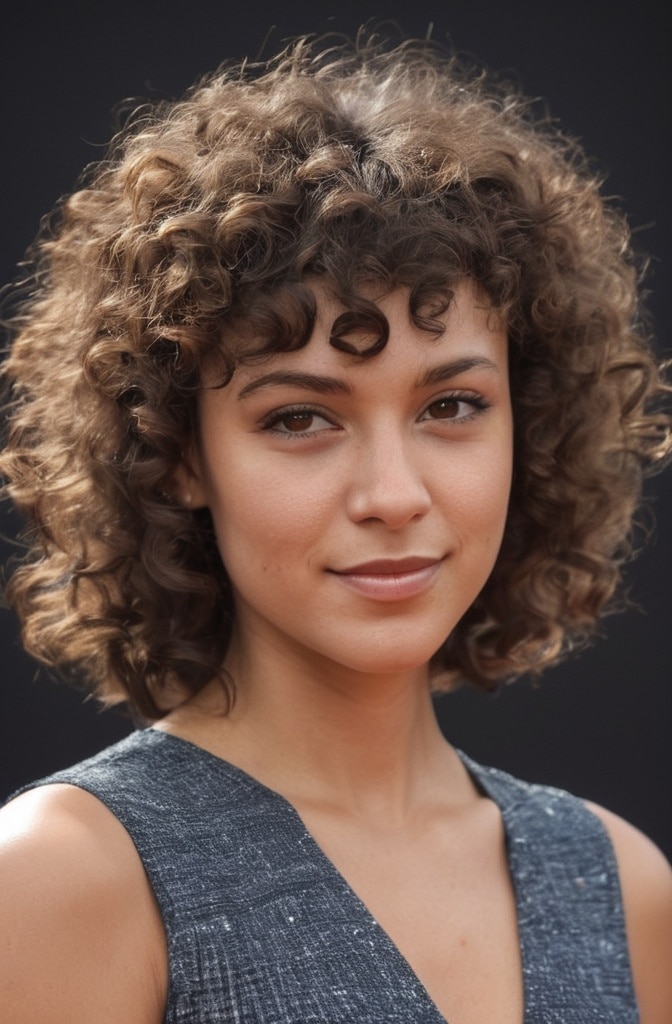
The curly wolf cut with bangs celebrates natural texture by incorporating specially designed layers that enhance curl definition while maintaining the wolf cut’s signature shape. This version features shorter layers around the crown that gradually lengthen, creating a beautiful waterfall effect that works with not against curly hair’s natural volume and movement. Curly bangs complete the look, typically cut slightly longer when wet to account for shrinkage, framing the face with soft spirals that can be worn swept to the side or falling just above the eyebrows. This interpretation is revolutionary for curly-haired individuals who’ve been told they “can’t wear” certain trendy cuts, proving that the wolf cut actually enhances rather than fights natural curl patterns.
The beauty of this curly variation lies in its ability to work with a wide range of curl types, from loose waves to tight coils, each creating its own unique version of the wolf cut silhouette. Styling becomes remarkably simple usually just requiring curl-enhancing cream scrunched into wet hair, followed by diffusing or air-drying without disturbing the curl pattern too much. Many women with curly hair report that this cut actually shortens their styling time, as the layers are designed to fall naturally into place without excessive manipulation. The curly wolf cut with bangs also grows out beautifully, with the layers simply evolving rather than creating awkward transition phases that require frequent trims, making it ideal for low-maintenance curl enthusiasts who want a distinctive style without the upkeep.
5. Platinum Blonde Wolf Cut

The platinum blonde wolf cut combines two bold style choices into one head-turning look that exudes rock star confidence and fashion-forward sensibility. This icy blonde color amplifies the wolf cut’s dimensional layers, creating striking contrast between the shorter pieces on top and the longer strands that frame the face and cascade down the back. The platinum hue highlights every layer and texture, making even subtle wolf cuts appear more dramatic and intentional in their disconnection. This combination works particularly well for those with naturally light hair or those willing to commit to the maintenance that platinum requires, as the frequent root touch-ups provide opportunities to refresh the cut’s shape as well.
What makes this combination so striking is how the bright blonde color emphasizes the cut’s texture even the slightest movement catches the light differently, creating a dynamic, almost shimmering effect as you move. Many stylists recommend incorporating shadow roots or lowlights within this platinum wolf cut to add even more dimension and reduce the frequency of touch-ups, which can be especially helpful when maintaining both the color and the cut’s specific shape. While definitely not a low-maintenance option, the platinum wolf cut delivers maximum impact and has become something of a signature look among fashion influencers and musicians who want their hair to make as much of a statement as their clothing. For those not ready to commit to full platinum, even adding face-framing blonde pieces can enhance the wolf cut’s distinctive layering while requiring less overall maintenance.
6. Auburn Wolf Cut for Fall

The auburn wolf cut embodies autumn’s rich, warm energy with its dimensional reddish-brown tones that perfectly complement the cut’s layered structure. This color choice adds remarkable depth to the wolf cut, with the various auburn shades catching light differently throughout the disconnected layers, creating a mesmerizing effect similar to sunlight filtering through fall foliage. The warmer tones particularly enhance the face-framing layers, casting a flattering, luminous glow onto the skin that brightens complexions during the darker fall and winter months. Many women find that this color dimension actually enhances the wolf cut’s volume, as the eye perceives the different auburn tones as additional layers of texture and movement.
Styling an auburn wolf cut offers countless seasonal possibilities that celebrate its dimensional color and textured cut. Air-dried with just a touch of smoothing cream creates an effortless everyday look, while loose waves achieved with a large-barrel curling iron showcase the color variations throughout the layers for more dressed-up occasions. The versatility of this particular combination makes it especially popular during fall when wardrobes shift toward warmer tones and richer textures that naturally complement this multidimensional hair color. Auburn wolf cuts tend to grow out beautifully too, as subtle regrowth actually adds to the intentionally lived-in quality that defines this cut, making it ideal for those who prefer to stretch time between salon appointments without sacrificing style.
7. Wolf Cut with Money Piece Highlights
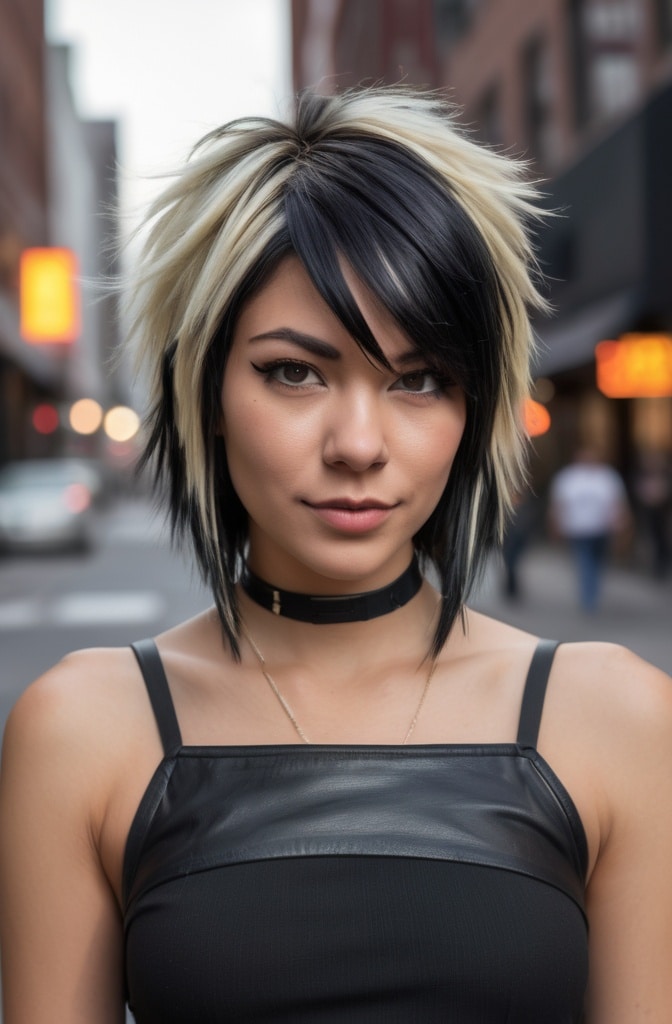
The wolf cut with money piece highlights combines textured layering with face-framing brightness that draws immediate attention to your best features. This variation incorporates bold, lighter sections just around the face—typically one to two shades lighter than your base color that accentuate the wolf cut’s shorter front layers and wispy bangs. The strategic placement of these highlights emphasizes the movement in the cut, creating a gorgeous halo effect that brightens your complexion and makes your eyes pop. Many stylists are combining chunky money pieces with subtle balayage throughout the rest of the cut to ensure the transition looks intentional rather than stark.
What makes this combination particularly appealing is how it creates dimension without requiring full-head color, making it both more affordable and lower maintenance than all-over lightening. The contrast between the brighter face-framing pieces and the deeper base color enhances the wolf cut’s disconnected layers, making each piece appear more defined and deliberate in its placement. This highlighting technique works beautifully with the wolf cut’s grow-out phase too as your hair lengthens, the money pieces continue to frame your face while the layers evolve, meaning you can go longer between cuts without losing the style’s impact. For those who love changing their look seasonally, money piece highlights can easily be adjusted going brighter for summer or warmer for fall while maintaining the signature wolf cut shape that works year-round.
8. Wolf Cut for Fine Hair
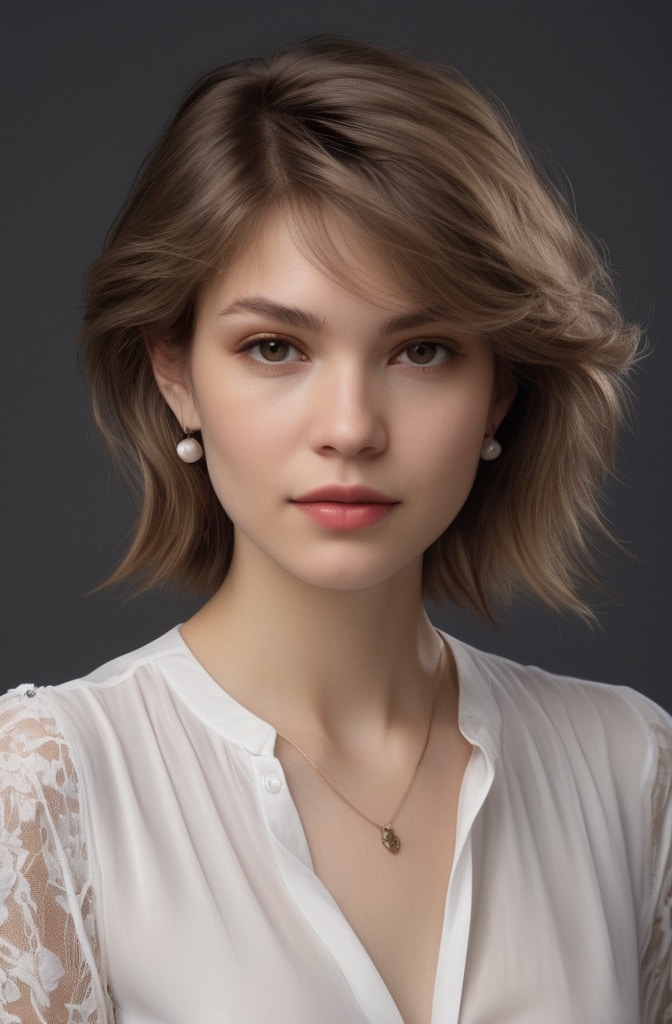
The wolf cut for fine hair is a game-changer for those with thinner locks, as its strategic layering creates the illusion of thickness and volume where it’s needed most. This adaptation features more subtle disconnection between the top and bottom layers to prevent fine hair from looking too wispy or sparse at the ends. Layers are concentrated primarily around the crown and face to build maximum volume on top, while keeping the perimeter fuller to maintain the appearance of density throughout. Fine-haired individuals who’ve struggled with flat, lifeless cuts are often amazed at how this version of the wolf cut seems to double their hair’s volume without relying on excessive product or daily styling.
The magic of this variation lies in how it works with fine hair’s natural qualities rather than fighting against them. The shorter layers on top create natural lift at the roots, while texturizing techniques like point-cutting and subtle undercut sections remove weight without sacrificing the appearance of fullness. Many women with fine hair report that this cut actually requires less daily styling than their previous haircuts, as the layers naturally create volume that previously required teasing or volumizing products. For styling, a lightweight mousse applied at the roots before blow-drying upside down can enhance the cut’s built-in volume, while avoiding heavy conditioners or oils on the upper layers helps maintain the style’s lifted effect. This wolf cut variation proves that even those with finer hair textures can rock this trending style with the right adaptations.
9. Asymmetrical Wolf Cut
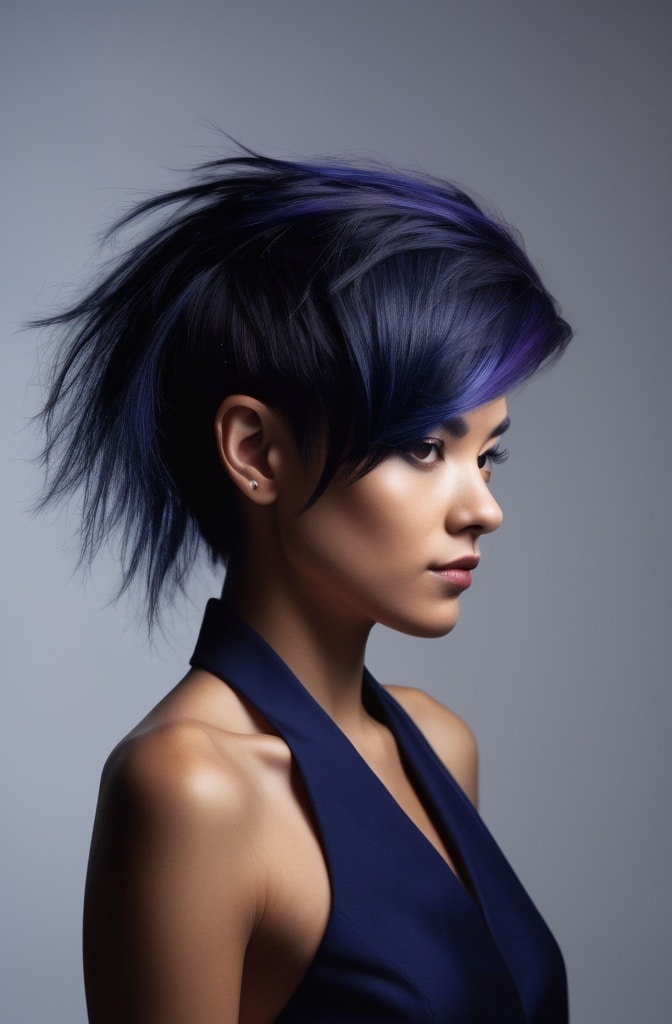
The asymmetrical wolf cut adds an avant-garde twist to the already edgy style by incorporating deliberate unevenness that creates a striking, artistic silhouette. This bold interpretation typically features one side cut shorter often with more dramatic layering or even an undercut element while the opposite side maintains longer, flowing layers that cascade down past the shoulder. The asymmetry can be subtle enough for everyday wear or dramatically different for those seeking a more high-fashion, editorial look. This version makes a powerful statement about personal style and confidence, appealing to those who view their hair as an extension of their artistic expression.
What makes the asymmetrical wolf cut so captivating is how it plays with balance and creates unexpected visual interest from every angle. The face-framing layers are typically cut to enhance this asymmetry, with the shorter side featuring wispy pieces that highlight cheekbones while the longer side creates a curtain-like effect that can be tucked behind the ear or allowed to fall forward dramatically. Styling this variation often requires minimal effort the cut itself does most of the work though some strategic product placement can enhance the intentional disconnect between sides. Many wearers of this version find it particularly versatile, as they essentially have two distinct looks in one cut they can part their hair differently to emphasize or downplay the asymmetry depending on the occasion or their mood that day.
10. Wolf Cut with Micro Bangs
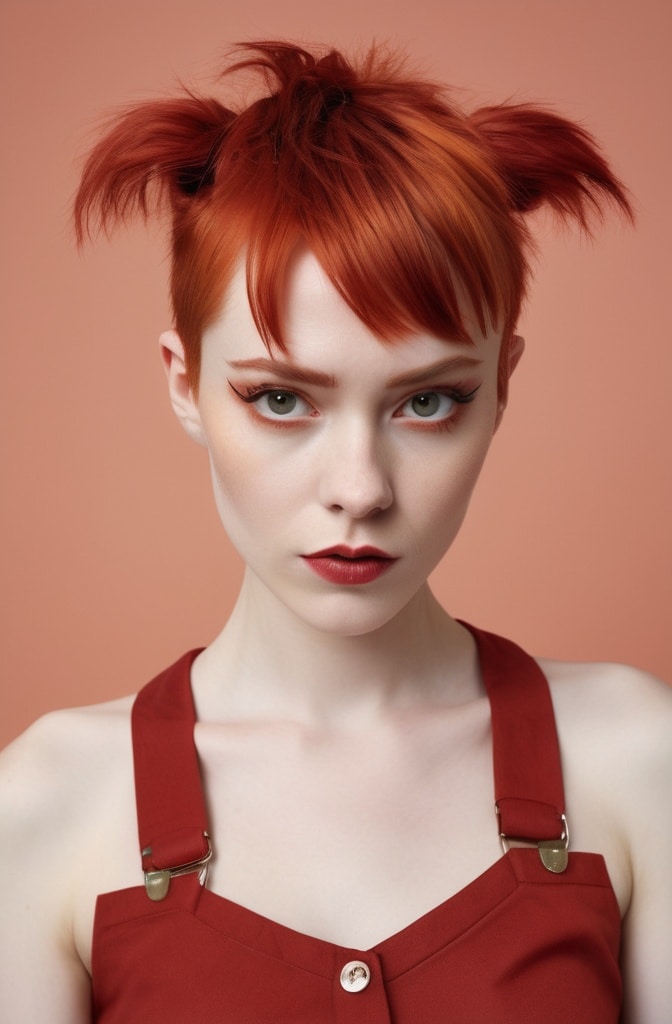
The wolf cut paired with micro bangs creates a striking juxtaposition between ultra-short, precise fringe and the deliberately disheveled layers that define the wolf cut silhouette. These tiny bangs typically cut straight across at eyebrow level or even higher add architectural precision to the otherwise undone look, creating a fascinating blend of edgy and sweet that’s reminiscent of French New Wave cinema starlets with a modern twist. The contrast between the meticulously straight micro bangs and the textured, choppy layers creates visual interest that draws immediate attention to the eyes and brows. This combination works particularly well for those with strong facial features they want to highlight, as the short fringe creates a frame that puts the focus squarely on your natural beauty.
Styling this bold combination requires a touch more precision than other wolf cut variations, particularly when it comes to maintaining those micro bangs. Many wearers find that keeping a small flat iron handy for quick bang touch-ups is essential, while the rest of the cut can be styled with the typical tousled, undone approach that defines the wolf cut aesthetic. One of the unexpected benefits of this pairing is how it grows out as the micro bangs lengthen, they naturally blend into the wolf cut’s face-framing layers, creating an evolving style that transitions seamlessly into curtain bangs or side-swept fringe without an awkward in-between phase. For those seeking a wolf cut with maximum impact and personality, this micro bang variation offers that perfect balance of structured and chaotic elements that makes truly iconic hairstyles stand the test of time.
11. Mullet-Forward Wolf Cut

The mullet-forward wolf cut leans heavily into the “business in front, party in back” aesthetic with a more dramatic disconnect between the crown layers and the length at the nape. This bolder interpretation honors the wolf cut’s mullet roots while incorporating just enough of the shag’s softness to keep it wearable for everyday life. The top features shorter, choppier pieces that create volume and texture, while the back maintains significant length that can fall anywhere from mid-neck to past the shoulders depending on how dramatic you want the effect to be. This version tends to incorporate shorter, piece-y bangs that blend into face-framing layers, creating a rockstar silhouette that’s both retro and thoroughly modern.
What makes this variation so compelling is its unapologetic embrace of the mullet’s rebellious spirit, transformed through modern cutting techniques that add softness and wearability. The key to this interpretation is texture lots of it achieved through heavy point cutting, razor work, and strategic thinning that creates movement throughout both the shorter and longer sections. Many who choose this style appreciate its versatility, as it can be styled sleek for a more subtle effect or amplified with texture spray and diffusing for maximum impact and volume. This mullet-forward variation has become particularly popular among those in creative fields and the music scene, where its bold silhouette and attitude-filled shape communicate artistic confidence and a willingness to embrace unconventional beauty standards.
12. Pastel Wolf Cut

The pastel wolf cut combines candy-colored hues with textured layers to create a dreamy, otherworldly aesthetic that’s both playful and edgy. Soft pinks, lavenders, mint greens, or faded blues enhance the cut’s dimensional layers, with the color application often strategically placed to highlight the disconnection between the top and bottom sections. Many colorists choose to concentrate brighter pastel tones around the face-framing pieces while using more subtle hues throughout the longer layers, creating a beautiful color journey that evolves as the hair moves. This combination appeals to those who view their hair as the ultimate fashion accessory—a living extension of their personal style that changes with their mood and the seasons.
The beauty of this colorful interpretation lies in how the pastel shades actually enhance the cut’s texture, making each layer more visible and the overall style more dynamic. The softness of pastel colors surprisingly complements the wolf cut’s edgy nature, creating an interesting contradiction that feels fresh and modern rather than harsh. Styling a pastel wolf cut typically involves products that maintain color vibrancy while enhancing texture color-safe mousses, texture sprays, and leave-in conditioners that keep the pastels bright without weighing down the all-important volume at the crown. Many who choose this combination find that their hair becomes a conversation starter and mood-lifter, bringing a bit of whimsy and artistic expression to everyday life through the perfect marriage of cutting-edge structure and delicate, dreamy color.
13. Wolf Cut with Curtain Bangs for Round Faces

The wolf cut with curtain bangs offers particular magic for round faces, as its combination of volume at the crown and face-framing layers creates the illusion of length and definition. This tailored variation features slightly longer curtain bangs that part in the middle and swoop outward at cheekbone level, creating diagonal lines that visually slim and elongate fuller face shapes. The top layers add height that draws the eye upward, while the disconnected longer sections create vertical lines that further enhance the lengthening effect. Many women with round faces who’ve shied away from heavily layered cuts are surprised by how flattering this specific combination can be when customized to their face shape.
The curtain bangs in this variation serve as the secret weapon for round faces, as their outward movement creates negative space around the cheeks that defines facial structure in a way that’s both subtle and effective. Stylists often recommend keeping these bang sections slightly longer grazing the cheekbones rather than stopping at the brow to maximize the elongating effect while maintaining the wolf cut’s signature textured appearance. Styling this version typically involves using a round brush to create that perfect curtain bang swoop away from the face, while the rest of the cut can be worn with your natural texture enhanced by scrunching with lightweight styling products. This thoughtfully adapted wolf cut proves that with the right customization, even trendy styles can be made universally flattering for diverse face shapes.
14. Wolf Cut for Gray and Silver Hair
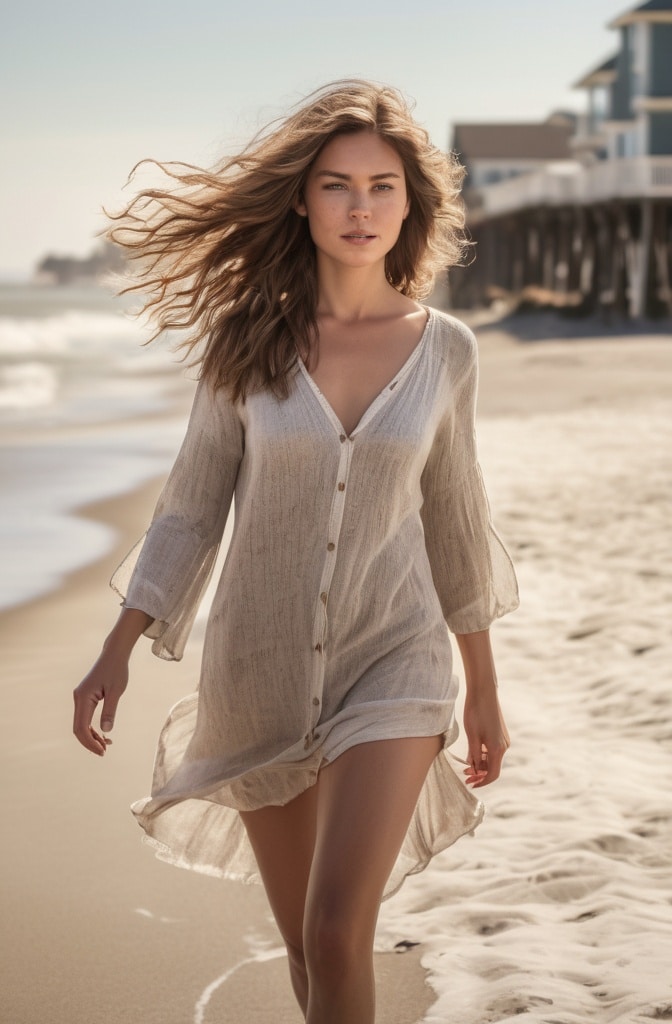
The wolf cut for gray and silver hair creates a stunning contrast between modern, edgy cutting techniques and the sophisticated, luminous quality of natural silver strands or intentionally gray color. This elegant yet contemporary pairing celebrates rather than conceals gray hair, using the wolf cut’s dimensional layers to showcase the natural highlights and lowlights present in silver hair. The textured layers catch the light differently throughout, creating a multidimensional silver effect that appears to change with movement and lighting. Many women embracing their natural gray or choosing silver as their signature shade find that the wolf cut’s tousled texture helps avoid the “helmet hair” effect that can sometimes occur with more traditional cuts on gray hair.
What makes this combination particularly striking is how it challenges conventional expectations about age-appropriate hairstyles, proving that trendy cuts can look sophisticated and chic on silver hair at any age. The wolf cut’s built-in volume at the crown addresses one of the common concerns with gray hair that it can sometimes appear flatter or finer by creating natural lift where it’s most flattering. Styling this silver wolf cut often involves products specifically formulated for gray hair that enhance shine and prevent yellowing, while texturizing sprays and lightweight mousses help maintain the cut’s intentionally piece-y, lived-in quality. Many women report that embracing this combination has been liberating, allowing them to honor their natural silver shade while still expressing their personality through a contemporary, fashion-forward cut.
15. Textured Wolf Cut for Wavy Hair
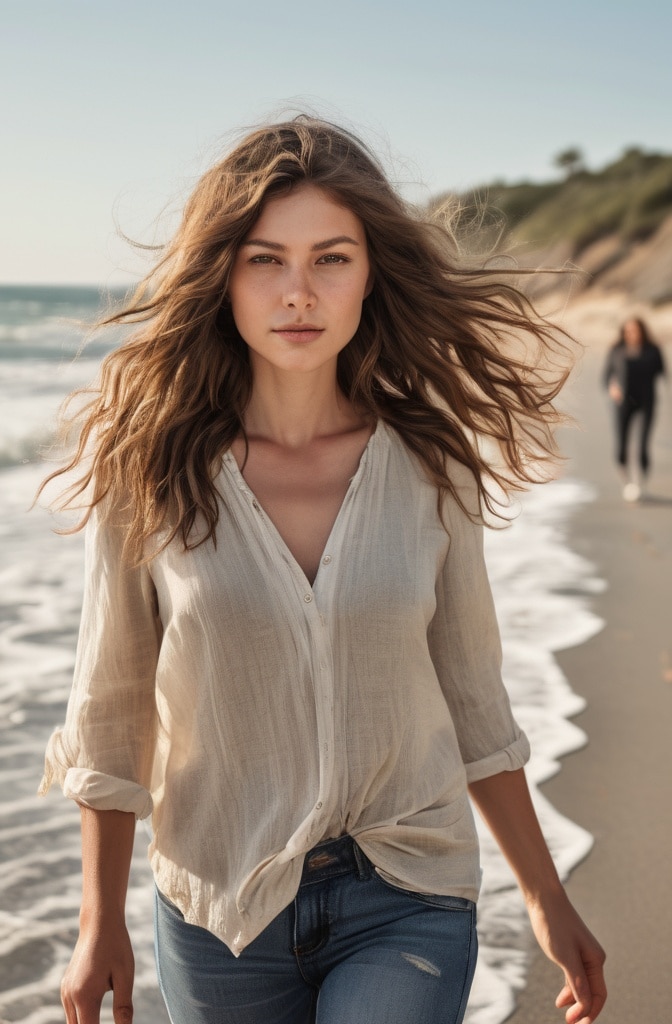
The textured wolf cut for wavy hair creates a match made in hair heaven, as this cut was practically designed to enhance natural waves and create effortless, lived-in volume. This variation embraces and amplifies wavy texture with layers strategically placed to encourage curl formation and create natural movement throughout the style. The disconnected layers work with your wave pattern rather than against it, with shorter pieces around the crown that create volume and face-framing layers that define your features. Wavy-haired individuals often find this cut particularly low-maintenance, as it’s designed to air-dry beautifully without requiring heat styling or excessive product.
The beauty of this wavy interpretation lies in its celebrate-what-you’ve-got approach that transforms sometimes unruly waves into an intentional, perfectly imperfect style. Many women with natural waves who’ve struggled with cuts that either fight their texture or fall flat find that the wolf cut’s layering technique enhances their natural pattern while providing structure and shape. Styling typically involves applying a lightweight curl cream or mousse to damp hair, scrunching gently to encourage wave formation, and then simply letting it air dry or diffusing on low heat to maintain the integrity of the natural texture. This version of the wolf cut has become particularly popular among those embracing the low-maintenance beauty movement, as it requires minimal daily styling while still looking purposefully tousled and effortlessly cool.
16. Wolf Cut with Wispy Ends
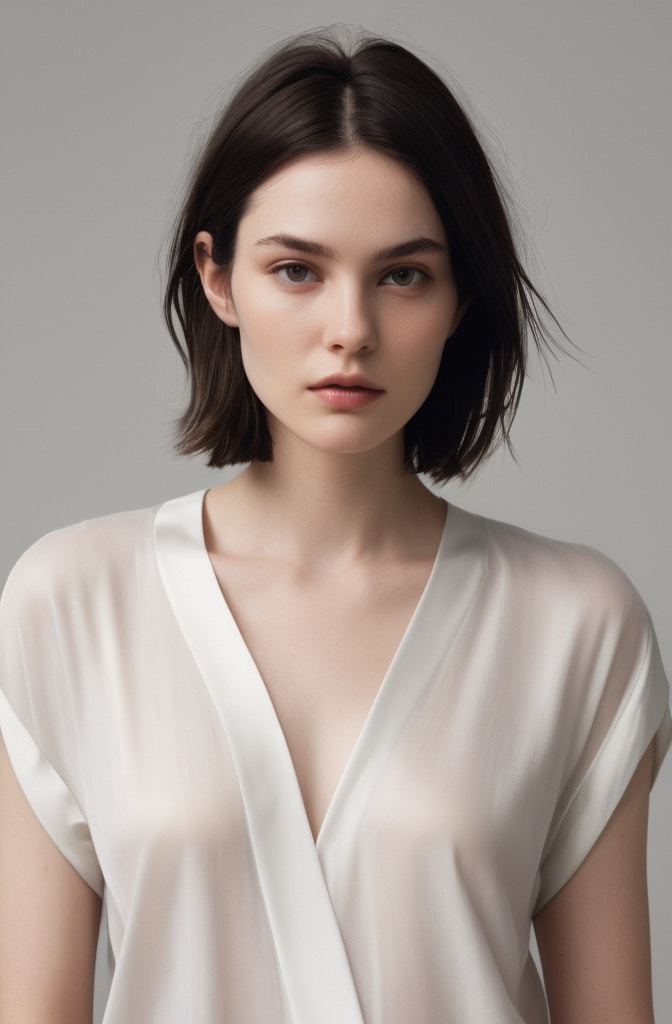
The wolf cut with wispy ends takes the signature disconnected layering of the classic wolf cut and adds an extra element of feathery lightness at the perimeter for an ethereal, windswept effect. This delicate variation maintains the wolf cut’s voluminous crown and face-framing layers but transitions to extremely texturized, almost transparent ends that move beautifully with the slightest breeze. The wispy finishing technique involves extensive point cutting, slide cutting, or razor work to remove bulk from the ends without sacrificing length, creating that coveted “fairy hair” quality that looks magical when caught in natural light. Many find this interpretation particularly flattering as it softens the sometimes harsh line between the wolf cut’s layers and ends, creating a more cohesive overall silhouette.
What makes this wispy-ended version so appealing is its beautiful movement and the way it creates an optical illusion of length without the heaviness that can sometimes weigh down the wolf cut’s distinctive shape. Styling this variation often involves using a lightweight texturizing spray through the mid-lengths and ends to enhance the piece-y definition without clumping or weighing down those delicate tips. Many women report that this adaptation grows out particularly well, as the wispy ends blend naturally into new growth without creating a harsh line of demarcation that requires frequent trimming. For those seeking a wolf cut with maximum movement and an almost otherworldly quality of lightness, this wispy-ended variation delivers that perfect balance of structure and ethereal softness.
17. Wolf Cut for Thick Curly Hair

The wolf cut for thick curly hair harnesses the natural volume and texture of dense curls to create a show-stopping shape with incredible dimension and movement. This specialized variation incorporates strategic layering techniques that remove bulk where needed while maintaining the curl pattern’s integrity throughout. The top layers are typically cut shorter to create the wolf cut’s signature height at the crown, while the longer layers are carefully crafted to encourage curl formation rather than creating unwanted frizz or disruption to the natural pattern. For those with thick curly hair who’ve struggled with triangle-shaped cuts or overwhelming volume, this variation offers welcome relief by distributing volume more evenly throughout rather than just at the bottom.
What makes this interpretation truly exceptional is how it transforms potentially unmanageable thick curls into a deliberate, sculptural shape that enhances rather than fights natural texture. Many curl specialists use dry-cutting techniques to shape this variation, allowing them to see exactly how each curl will fall and behave within the overall silhouette. Styling typically involves curl-enhancing creams or gels applied to soaking wet hair, followed by either diffusing or air-drying without disturbing the curl pattern. The final result celebrates the natural volume of thick curly hair while providing enough structure to create that distinctive wolf cut silhouette—proving that this trending cut can be adapted beautifully for even the densest, most textured hair types.
18. Mahogany Wolf Cut
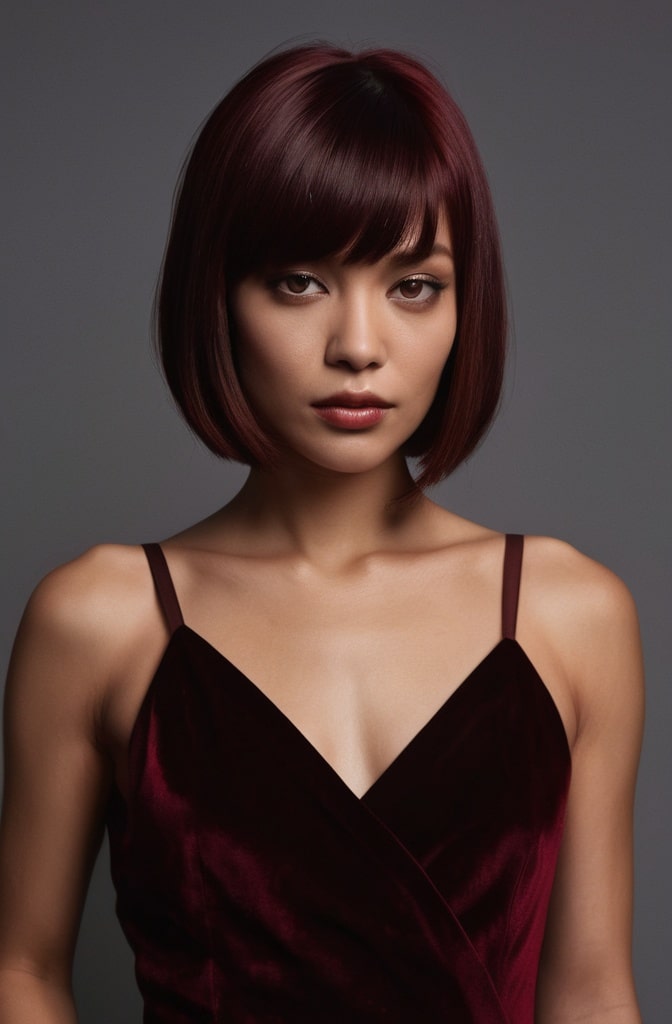
The mahogany wolf cut pairs rich, multidimensional reddish-brown tones with textured layers to create a striking combination that’s both fiery and sophisticated. This deep, warm color choice enhances the wolf cut’s layered structure by creating natural highlights and shadows throughout the disconnected sections, with the mahogany’s red undertones catching light differently at each layer. The result is a captivating dimensional effect that seems to shift and change with movement, almost like flames dancing through the hair. Many find this color particularly flattering as it adds warmth to the complexion while the wolf cut’s face-framing layers highlight the eyes and cheekbones.
What makes this mahogany interpretation particularly special is how the color’s depth enhances the cut’s texture without requiring additional styling products. The natural variation in this rich color creates visual interest throughout the layers, with lighter mahogany tones typically placed around the face to brighten features while deeper, more intense shades run through the longer sections. Styling this variation often involves products that maintain color vibrancy while enhancing natural texture—color-safe mousses, heat protectants, and shine serums that keep the mahogany looking rich and luminous. Many women find that this particular color choice grows out beautifully with the wolf cut, as the dimensional quality of mahogany creates a natural-looking transition even as roots begin to appear.
19. Wolf Cut Bob

The wolf cut bob combines the cropped convenience of a bob with the textured, disconnected layering of the wolf cut to create a bold, voluminous shorter style that’s full of personality. This hybrid typically sits at chin to collarbone length, with dramatic layers throughout that create the wolf cut’s signature height at the crown while maintaining enough length around the perimeter to be recognized as a bob. The face-framing pieces are cut to enhance features and create movement, while the back often features that distinctive wolf cut disconnection that gives the style its edge. This variation has gained popularity among those who want the wolf cut’s edgy texture but prefer the practicality and versatility of shorter hair.
What makes this bobbed interpretation so appealing is how it takes two classic styles and reinvents them into something thoroughly modern and fresh. The shorter length maximizes volume potential, as the reduced weight allows the layers to stand up more dramatically, creating impressive height and movement that longer wolf cuts sometimes can’t achieve. Styling this variation offers surprising versatility it can be air-dried with texturizing spray for an effortless, tousled effect, or blow-dried with a round brush for a more polished take that still maintains the cut’s distinctive shape. Many women find this shorter wolf cut particularly liberating, as it offers the trendy textured aesthetic with less overall maintenance and styling time than longer interpretations.
20. Wolf Cut Pixie for Bold Statements

The wolf cut pixie creates an ultra-edgy, high-fashion interpretation that combines the shortest version of a wolf cut with pixie-like cropping for maximum impact. This daring variation features dramatic disconnection between the longer top sections which maintain enough length to create the wolf cut’s signature texture and movement and the much shorter sides and back that give it the pixie foundation. The result is a bold, architectural shape that offers incredible height and volume at the crown while keeping the sides sleek and close to the head. This avant-garde interpretation appeals to those confident enough to make a dramatic style statement and who appreciate the artistry of cutting-edge hair design.
What makes this pixie-wolf hybrid so striking is its perfect balance of feminine and masculine elements the softness of the textured top layers contrasts beautifully with the precision of the cropped sides, creating an intriguing visual tension. Many who choose this bold style appreciate its surprisingly low maintenance nature, as the short length reduces styling time while still offering plenty of versatility through the longer top sections. The wolf cut pixie can be styled sleek and sophisticated with a bit of pomade for a more professional environment, or tousled and piece-y with texturizing spray for an edgier, more artistic vibe. This interpretation has become particularly popular among those in creative industries who view their hair as an extension of their artistic expression and aren’t afraid to embrace styles that challenge conventional beauty standards.
21. Wolf Cut with Peekaboo Color

The wolf cut with peekaboo color combines textured layering with hidden pops of vibrant hues that reveal themselves only with movement, creating a playful yet sophisticated effect perfect for those who want to experiment with color without full commitment. This clever variation typically features bold colors electric blues, fiery reds, or vivid purples placed strategically underneath the top layers or integrated into the interior sections of the cut, allowing them to “peek out” when the hair moves or is styled certain ways. The wolf cut’s disconnected layers are ideal for this coloring technique, as they naturally create windows that reveal the hidden colors beneath. Many professionals appreciate this combination as it allows them to maintain a relatively conservative appearance when needed while expressing personality through glimpses of color that appear with movement.
The magic of this peekaboo interpretation lies in its element of surprise the wolf cut appears relatively conventional at first glance, but reveals its hidden dimension with every head turn or gust of wind. The placement of these colorful sections is crucial to the effect, with most colorists positioning them where they’ll be most visible when the wolf cut’s layers separate naturally typically around the face-framing pieces, through the mid-lengths, or at the nape where longer layers fall over shorter ones. Styling often involves enhancing the cut’s natural movement to showcase the peek-a-boo sections, whether through loose waves that separate the layers or strategic backcombing that creates space between sections to reveal the colors beneath. This playful yet sophisticated approach to the wolf cut offers the perfect balance for those who want to embrace bold color without making it the dominant feature of their look.
22. Wolf Cut for Transitioning Hair

The wolf cut for transitioning hair offers a stylish solution for those growing out relaxers or chemical treatments, as its disconnected layers work beautifully with multiple textures in a single cut. This thoughtfully adapted variation incorporates techniques specifically designed to blend different textures typically straighter ends and more textured new growth—into a cohesive style that looks intentional rather than in-between. The shorter layers around the crown embrace natural texture, while the longer pieces can incorporate whatever remains of the previously treated hair in a way that creates a harmonious overall silhouette. Many women transitioning to their natural texture find this cut particularly empowering, as it transforms what could be an awkward growing-out phase into a fashionable, on-trend style.
What makes this transitional interpretation so valuable is how it celebrates the beauty of texture while providing a practical pathway to fully natural hair without the “big chop” that many feel hesitant about. Stylists experienced with transitioning hair often use specialized cutting techniques that remove weight where needed while maintaining enough length to showcase the emerging natural pattern. Styling typically involves products specifically formulated for multiple textures, with moisture-rich creams for the more textured sections and lightweight serums for the processed ends. Many women report that this wolf cut variation not only made their transition more aesthetically pleasing but actually accelerated their journey to fully natural hair by making the growing-out phase enjoyable rather than something to be endured.
23. Copper Wolf Cut
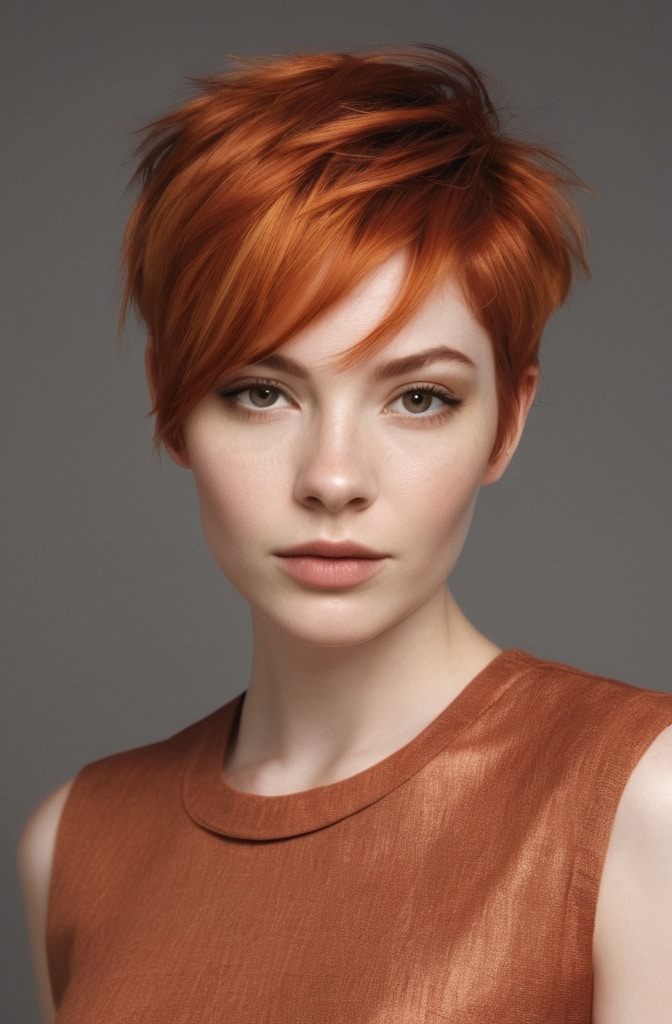
The copper wolf cut pairs fiery, attention-grabbing ginger tones with textured layers to create a vibrant, head-turning style that exudes confidence and personality. This warm, metallic color choice enhances the wolf cut’s dimensional layers by creating natural light reflection throughout the disconnected sections, with the copper’s varied undertones—from penny-bright to deeper bronze—catching light differently at each angle. The result is a mesmerizing, multifaceted effect that seems almost illuminated from within, especially when sunlight hits the various layers. Many find this color particularly flattering as it brings warmth and radiance to the complexion while the wolf cut’s face-framing layers accentuate the eyes.
What makes this copper interpretation so special is how the color’s natural dimension enhances the cut’s texture, creating visual interest and movement even when styled simply. The brighter copper tones are typically concentrated around the face and on the shorter top layers, creating a beautiful gradient effect that transitions to slightly deeper tones through the longer sections. Styling this variation often involves products that maintain color vibrancy while enhancing natural shine—color-safe conditioners, heat protectants, and glossing serums that keep the copper looking brilliant and luminous. Many women find that this particular color choice grows out beautifully with the wolf cut, as the dimensional quality of copper creates a natural-looking transition even as roots begin to appear, extending time between salon visits.
24. Wolf Cut with Shadow Root
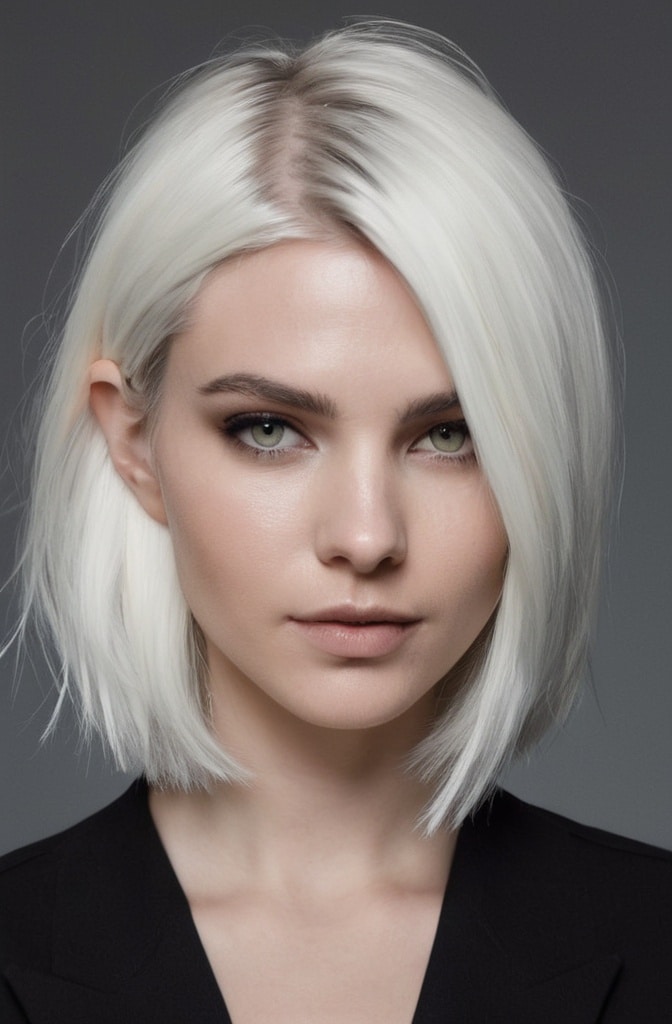
The wolf cut with shadow root combines textured layering with a deliberate color gradient that transitions from darker roots to lighter ends, creating a low-maintenance yet high-impact style perfect for those who want dimensional color without frequent touch-ups. This clever pairing typically features the wolf cut’s signature disconnected layers with a color application that keeps the roots and upper sections closer to your natural shade while gradually lightening through the mid-lengths and ends. The shadow root technique complements the wolf cut’s layered structure perfectly, as the darker top enhances the volume at the crown while the lighter ends create movement and dimension through the longer sections. Many busy professionals appreciate this combination as it allows them to maintain a trendy, dimensional look with significantly extended time between salon appointments.
What makes this shadow-rooted interpretation particularly brilliant is how the color placement actually enhances the wolf cut’s signature shape, with the darker top creating depth that makes the voluminous crown appear even more dramatic. The gradual transition to lighter ends creates visual interest throughout the layers, with the color journey mimicking the natural way hair would lighten if exposed to sun—darker at the roots and progressively lighter through the ends. Styling this variation typically involves products that enhance the natural separation between layers to showcase the color dimension, whether through texturizing sprays that create piece-y definition or curl-enhancing products that encourage natural movement. Many women find this approach to the wolf cut not only aesthetically pleasing but financially practical, as the intentional root means growing out occurs as part of the design rather than something requiring immediate correction.
25. Wolf Cut for Fine, Straight Hair

The wolf cut for fine, straight hair transforms potentially limp locks into a voluminous, textured style through strategic layering that creates the illusion of thickness and movement. This specialized variation incorporates more subtle disconnection between the top and bottom layers to prevent fine hair from looking too wispy, while still maintaining the wolf cut’s signature shape. Layers are concentrated primarily at the crown and around the face to build maximum volume where it’s most flattering, while the perimeter remains slightly fuller to maintain the appearance of density. Fine-haired individuals who’ve struggled with flat, one-dimensional styles are often amazed by how this particular wolf cut adaptation seems to double their hair’s volume without relying on excessive product.
The magic of this fine-hair interpretation lies in how it works with straight hair’s natural qualities to create texture where none existed before. Cutting techniques like point cutting and notching create natural-looking texture even in the straightest hair, while strategic undercut sections remove weight from underneath without sacrificing the appearance of fullness. Many women with fine, straight hair report that this cut actually simplifies their daily routine, as the layers create natural volume that previously required extensive heat styling or volumizing products. For styling, a volumizing mousse applied at the roots before blow-drying upside down enhances the cut’s built-in lift, while texturizing powder applied at the crown can create additional height for special occasions. This thoughtfully adapted version proves that even those with the finest, straightest hair can successfully embrace the wolf cut trend with the right customization.
26. Wet-Look Wolf Cut

The wet-look wolf cut combines textured layering with a glossy, just-stepped-out-of-the-shower styling technique that creates editorial-worthy drama for special occasions or nights out. This high-fashion interpretation maintains the wolf cut’s signature disconnected layers but styles them with generous amounts of high-shine gel or glossing products to create that sleek, wet appearance that’s become a runway and red carpet staple. The contrast between the structured cut and the slick styling creates a fascinating juxtaposition that’s both edgy and glamorous simultaneously. Many fashion-forward individuals appreciate this styling option for its ability to transform their everyday wolf cut into something extraordinarily chic for events where they want to make a statement.
What makes this wet-look version so striking is how it highlights the architectural quality of the wolf cut, with the high-shine finish emphasizing each deliberately placed layer and creating beautiful light reflection throughout the style. The heavier styling products actually work to the advantage of this cut, as they help define the disconnection between layers that might appear more blended with natural styling. To achieve this look, most stylists recommend applying generous amounts of styling gel or cream to damp hair, using fingers to create piece-y definition, then either allowing it to air dry or using a diffuser on low heat to maintain the wet appearance without actual moisture. This interpretation offers a perfect special-occasion option for wolf cut wearers who want to dramatically change their look for an evening without altering their cut.
27. Feathered ’70s-Inspired Wolf Cut

The feathered ’70s-inspired wolf cut channels disco-era vibes with dramatically swept-back layers that create a wings-like effect reminiscent of Farrah Fawcett’s iconic style, reimagined with the wolf cut’s modern edge. This nostalgic interpretation features softer, more blended layers than the typical wolf cut, with emphasis on creating movement away from the face rather than the piece-y, forward-falling effect of contemporary versions. The signature element is feathered layers that flip outward and backward, creating volume through the sides rather than just at the crown. Many vintage fashion enthusiasts love this throwback variation for its ability to reference ’70s style while still feeling current and wearable for today’s aesthetic.
The magic of this retro-inspired wolf cut lies in its soft yet voluminous silhouette that flatters virtually every face shape while creating a head-turning effect that’s both familiar and fresh. Styling typically involves a medium round brush and blow dryer to create that characteristic outward flip through the layers, followed by a light-hold hairspray to maintain the feathered effect without stiffness. What’s particular clever about this variation is how it brings together two trending hair moments—the current wolf cut phenomenon and the ongoing ’70s fashion revival—into one cohesive style that appeals to multiple generations. Many women find this interpretation surprisingly versatile, as it can be worn in its full feathered glory for maximum impact or toned down with more natural styling for everyday wear.
28. Undercut Wolf Cut
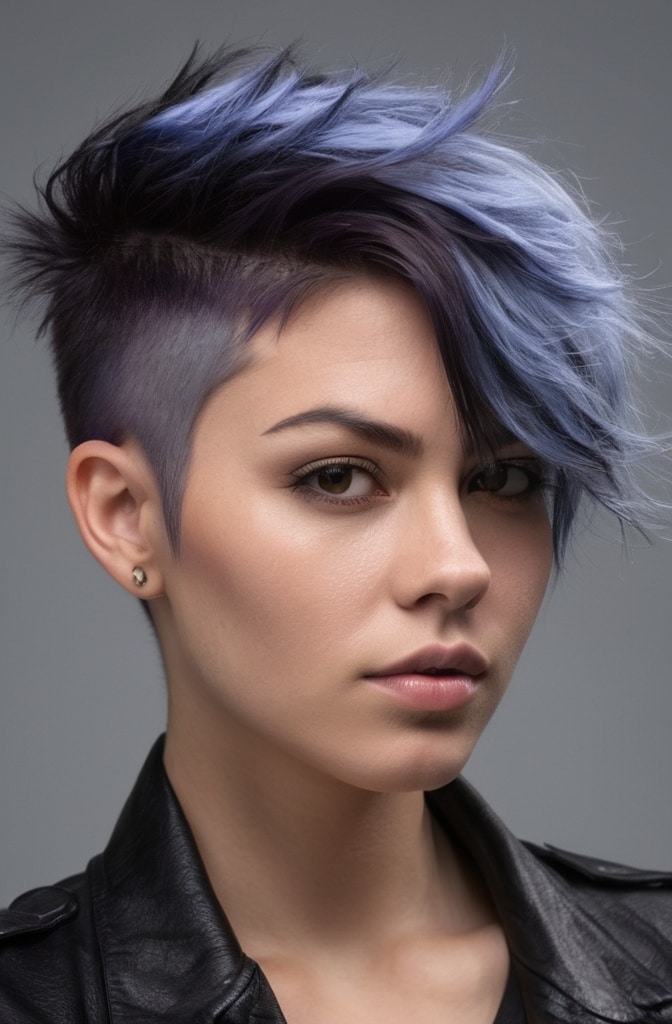
The undercut wolf cut adds a hidden edgy element to the already rebellious style by incorporating shaved or closely clippered sections beneath the longer top layers, creating a secret reveal that’s only visible when the hair is moved or styled certain ways. This bold interpretation typically features traditional wolf cut layering through the top and face-framing sections, but conceals an undercut that might occupy the nape, one side, or even a section underneath the crown, allowing for personalized placement based on your preference. The contrast between the longer, textured top layers and the closely cropped undercut creates fascinating visual tension and reveals itself dramatically when the hair is pulled up or swept to one side. Many who want to push fashion boundaries without completely committing to an all-over extreme cut find this hidden undercut variation the perfect compromise.
What makes this undercut variation so appealing is its chameleon-like versatility—the wolf cut appears relatively conventional when worn down, but reveals its edgier personality with a simple change in styling. The undercut section can be as subtle or dramatic as desired, ranging from a small nape section to more extensive side undercuts that create significant negative space when revealed. Some even incorporate designs or patterns shaved into the undercut section for an additional element of personalization that’s completely unique to the wearer. Maintenance requires more frequent trimming of the undercut portion to maintain the dramatic contrast with the longer layers, but many find this well worth the effort for the striking effect and the cooling benefit of having less hair in strategic areas.
29. Crimped Wolf Cut
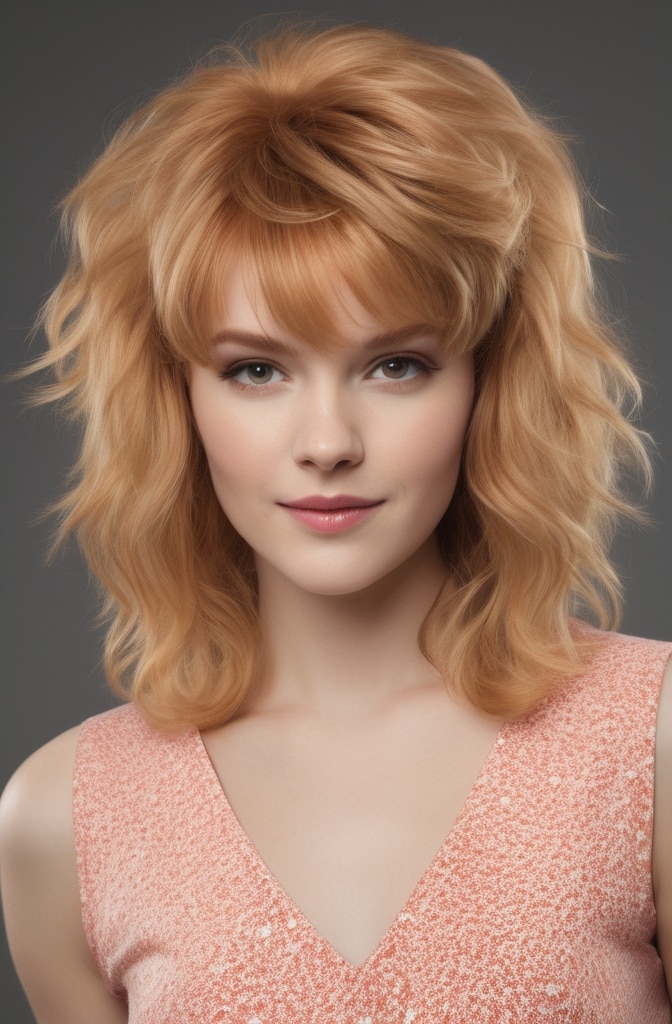
The crimped wolf cut resurrects the distinctive zigzag texture of ’80s and ’90s crimping tools and applies it selectively throughout the wolf cut’s layers to create unexpected dimension and dramatic volume. This playful interpretation maintains the cut’s characteristic silhouette but incorporates crimped sections—typically focused on the mid-lengths and ends—that create extraordinary texture and expansion within the style’s framework. The crimping technique can be applied to the entire head for maximum impact or just to specific sections for a more subtle effect that creates interesting contrast between smooth and zigzagged textures. Many Y2K fashion enthusiasts appreciate this nostalgic texture revival that manages to feel both retro and thoroughly modern when paired with the wolf cut’s contemporary shape.
What makes this crimped variation so fascinating is how it amplifies the wolf cut’s already substantial texture to create a truly head-turning style that defies gravity and conventional hair expectations. The crimping technique actually enhances the disconnected nature of the wolf cut by creating extreme texture differentiation between layers, with the zigzag pattern catching light in a completely different way than smooth sections. Achieving this look typically involves using a modern crimping iron (which creates less damage than vintage models) on dry hair, focusing on mid-lengths and ends while leaving some sections smooth for contrast. Many find this interpretation particularly fun for festival season, special events, or weekend experimentation when they want to transform their everyday wolf cut into something extraordinary without permanent commitment.
30. Inverted Wolf Cut
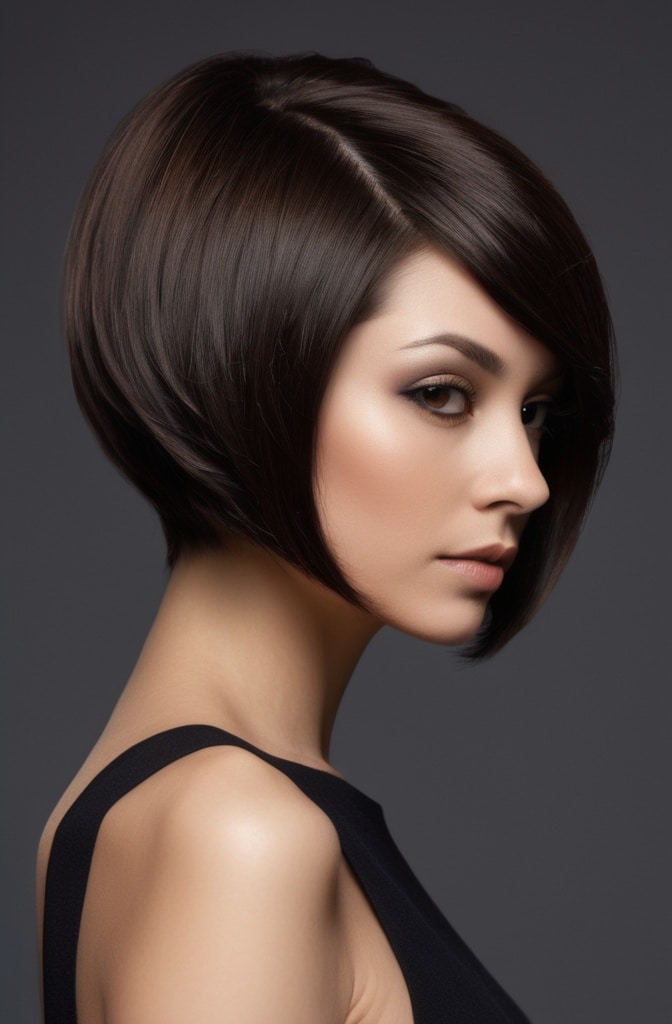
The inverted wolf cut flips the traditional silhouette on its head by concentrating the shortest layers at the nape rather than the crown, creating a reverse graduation that’s shorter in back and gradually lengthens toward the face. This architectural reinterpretation maintains the wolf cut’s textured, disconnected quality but redistributes volume to create a forward-moving silhouette that frames the face dramatically with its longest layers. The nape features the shortest, most textured sections that create a closely cropped effect at the back of the head, while the front pieces cascade well past the collarbone, sometimes even reaching chest level. Many who’ve tried traditional wolf cuts but found them too voluminous at the crown appreciate this inverted variation that shifts the focus to the face-framing sections.
What makes this inverted variation so striking is how it completely reimagines the wolf cut’s proportions while maintaining its essential textured, lived-in quality. The reverse graduation creates a silhouette that appears to be in motion, sweeping forward toward the face rather than falling back away from it. Styling typically emphasizes this forward movement, with blow drying techniques that direct the longer front sections inward toward the face rather than away from it. Many find this interpretation particularly flattering as it draws attention to the eyes and cheekbones while creating a sleek profile view that’s dramatically different from the voluminous crown of traditional wolf cuts. This architectural approach proves just how versatile the wolf cut concept can be when creative stylists reimagine its fundamental principles.
31. Split-Dyed Wolf Cut
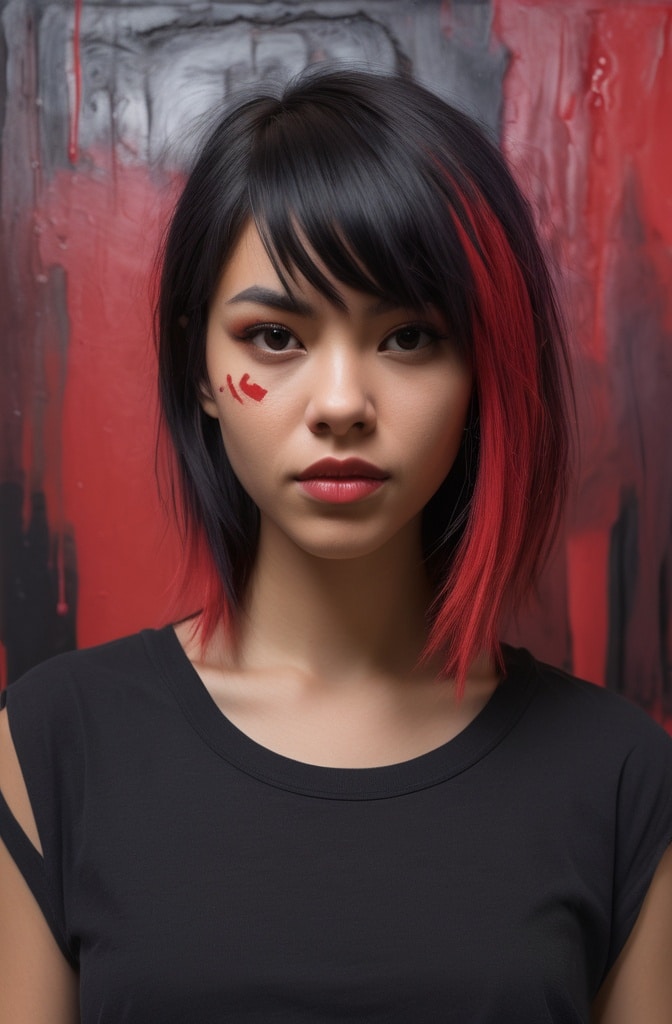
The split-dyed wolf cut creates dramatic visual impact by dividing the hair into two distinct color sections typically right down the middle with contrasting hues that emphasize the cut’s disconnected, textured nature. This bold interpretation might pair platinum blonde with jet black, vivid pink with electric blue, or natural brown with fiery red the possibilities are endless, with the contrast between the two chosen colors creating the signature effect. The wolf cut’s layered structure works perfectly with this color technique, as the shorter pieces on top blend slightly at the color division while maintaining the striking contrast throughout the longer sections. Many who want to make a strong personal style statement appreciate this unmistakable look that guarantees no one else in the room will have the same hair.
What makes this split-dyed variation so powerful is its unapologetic embrace of duality—no attempt to blend or transition between the colors, just a clean line of demarcation that creates two distinct looks in one cut. The contrast between the chosen colors actually enhances the wolf cut’s texture, as each hue catches light differently and makes the layers appear more defined than they might with a single color. Styling options are particularly versatile with this variation, as the hair can be parted differently to adjust the ratio between the two colors, worn half-up to showcase both simultaneously, or even braided to create a mesmerizing intertwined effect. This interpretation has become particularly popular among the younger generation who view their hair as a canvas for self-expression and appreciate styles that make a definitive statement about their willingness to embrace unconventional beauty.
32. Curly Wolf Shag Hybrid

The curly wolf shag hybrid takes the best elements of both iconic textured cuts—the wolf cut’s disconnected crown volume and the shag’s all-over layers and combines them into a curl-enhancing style that maximizes natural texture. This specialized variation features more consistent layering throughout than a traditional wolf cut, which tends to concentrate layers at the crown, but maintains that signature disconnection between the top and bottom sections. The result is a perfect middle ground between the two trending cuts that works particularly well for curly hair types from loose waves to tight coils. Many curly-haired individuals who couldn’t decide between a wolf cut and a shag find this hybrid offers the best features of both without sacrificing the integrity of their natural curl pattern.
What makes this hybrid interpretation so effective is how it strategically places layers to enhance curl formation throughout the entire head while still maintaining the wolf cut’s characteristic voluminous crown and face-framing pieces. Cutting techniques specifically designed for curly hair—like dry cutting and carving out curl families—ensure that each curl falls perfectly within the overall silhouette without creating unwanted frizz or disruption to the natural pattern. Styling typically involves curl-enhancing products applied to soaking wet hair, followed by either diffusing or air-drying without disturbing the curl formation. Many curly-haired women report that this specific variation not only enhances their natural texture but actually simplifies their routine by creating a cut that works harmoniously with their curl pattern rather than fighting against it.
33. Braided Crown Wolf Cut
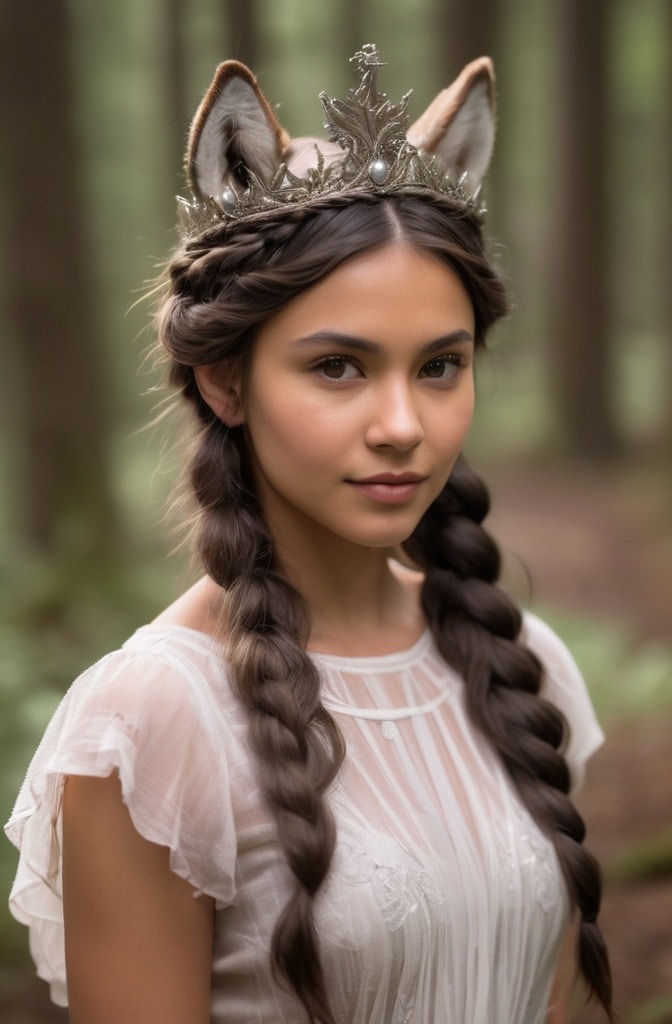
The braided crown wolf cut incorporates semi-permanent braided sections along the top layers to create extraordinary texture and dimension within the wolf cut framework. This innovative interpretation features micro braids—typically between 5-10 depending on hair density—placed strategically throughout the crown and face-framing sections, with the remaining hair cut in the signature wolf style with disconnected layers and textured ends. The braided sections add unexpected texture and can be customized with beads, colored thread, or metallic accents for additional personalization. Many who appreciate both protective styling techniques and trendy cuts find this fusion offers the best of both worlds—the edginess of the wolf cut with the artistic expression of braided elements.
What makes this braided variation so captivating is how it transforms the wolf cut from a single-texture style to a multi-dimensional creation that incorporates different textures and techniques into one cohesive look. The braided sections create beautiful contrast against the looser textured layers, adding visual interest and unexpected elements that catch the eye as the hair moves. These semi-permanent braids also serve a practical purpose, as they can help control certain sections that might otherwise be difficult to manage or style daily. Maintenance involves refreshing the braided sections every few weeks while trimming the remaining wolf cut layers as needed to maintain the overall shape. This interpretation has become particularly popular among those who appreciate cross-cultural hair influences and enjoy creating personalized styles that can’t be easily categorized or replicated.
34. Layered Bowl Wolf Cut

The layered bowl wolf cut creates a fascinating contradiction by combining the structured perimeter of a bowl cut with the internal disconnected layers that define the wolf cut. This architectural interpretation features a strong, curved line that frames the face—reminiscent of traditional bowl cuts—but incorporates heavy internal layering and texturizing to create the wolf cut’s signature volume and movement within that defined outline. The result is a style that appears precisely geometric from the front but reveals surprising texture and dimension when viewed from different angles or in movement. Many fashion-forward individuals who appreciate avant-garde hair design are drawn to this unexpected combination that challenges traditional cut categories.
What makes this hybrid interpretation so intriguing is its perfect balance between structure and chaos—the disciplined perimeter provides a frame for the deliberately disheveled internal layers, creating a captivating visual tension. The strong bowl-shaped perimeter typically sits at cheekbone or jaw level, while the interior layers create height at the crown and textured movement throughout that’s revealed when the hair is tousled or caught in motion. Styling often involves enhancing this contrast, with smoothing techniques applied to the perimeter to emphasize its precise line while texturizing products are used throughout the interior to maximize separation and movement. This architectural approach to the wolf cut has become particularly popular among those in creative fields who appreciate conceptual fashion and enjoy wearing styles that function almost as wearable art.
35. Wolf Cut with Face-Framing Tendrils
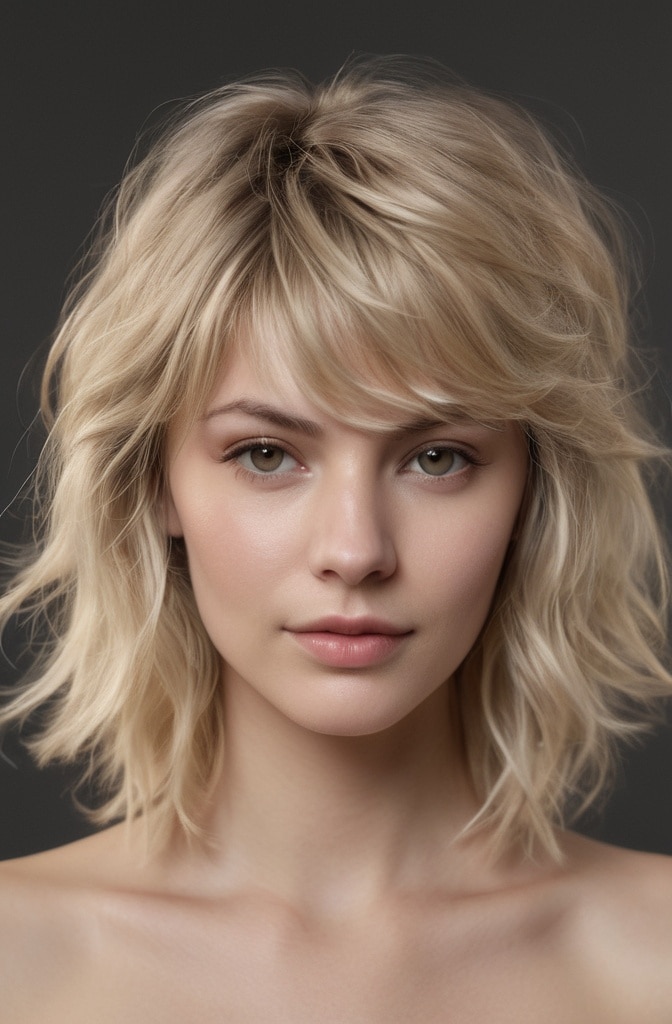
The wolf cut with face-framing tendrils incorporates deliberately separated, extra-long pieces around the face that hang well below the primary layers, creating romantic wisps that soften the cut’s otherwise edgy silhouette. This feminine interpretation maintains the wolf cut’s signature volume at the crown and textured layers throughout but adds these distinctive tendrils—typically two to four strategically placed pieces—that might fall several inches longer than the surrounding layers. These delicate strands create beautiful framing that draws attention to the eyes and cheekbones while softening the jawline. Many who find traditional wolf cuts too harsh appreciate how these face-framing pieces add a touch of softness and romance to the otherwise rebellious style.
What makes this tendril-enhanced variation so appealing is how it creates the perfect balance between the wolf cut’s inherent edginess and a more feminine, romantic aesthetic that works for a wider range of personal styles. The contrast between the textured, voluminous main sections and these deliberately separated, sleeker tendrils creates visual interest and allows for more versatile styling options. These face-framing pieces can be styled straight for maximum length contrast, curled for a more romantic effect, or even braided for added texture and personalization. Many find this interpretation particularly flattering as it combines the face-slimming effect of traditional face-framing layers with the added softness of these longer pieces that create vertical lines along the sides of the face.
36. Sculptural Wolf Cut
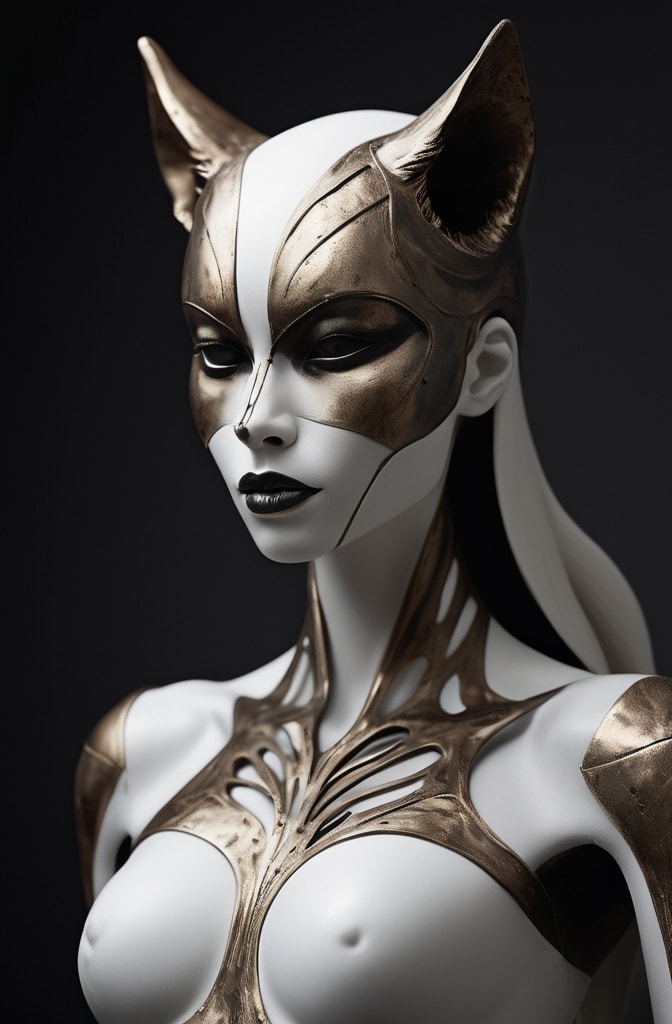
The sculptural wolf cut elevates the style to true hair artistry by incorporating dramatic, architectural elements that create an almost avant-garde interpretation of the trending cut. This high-fashion variation features exaggerated disconnection between sections, with some areas dramatically shorter than others to create striking negative space and sculptural quality throughout. The crown might feature extremely short, precise pieces that stand almost perpendicular to the head, while other sections maintain traditional wolf cut length but are cut with razor-sharp precision to create deliberate lines rather than soft texture. The result is a statement-making style that looks different from every angle and challenges conventional notions of what a wolf cut—or any haircut—can be.
What makes this sculptural interpretation so captivating is its unapologetic embrace of hair as an artistic medium, with each section carefully considered for its contribution to the overall three-dimensional form. This variation requires exceptional technical skill from the stylist, who must understand not just cutting techniques but principles of sculpture, balance, and negative space to create a cohesive yet boundary-pushing result. Styling typically involves products with strong hold properties, applied with precision to maintain the architectural quality without allowing gravity to collapse the carefully crafted structure. This interpretation has become particularly popular among those in creative industries who view their hair as an extension of their artistic expression and appreciate having a style that’s truly unique and impossible to replicate exactly.
37. Pixelated Wolf Cut
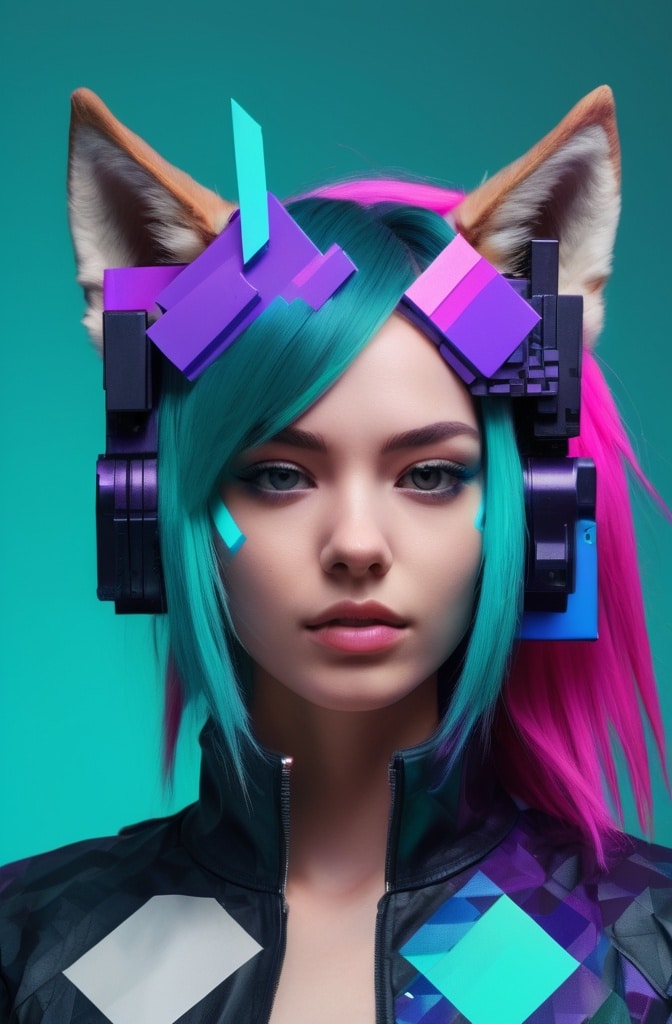
The pixelated wolf cut incorporates a fascinating color technique that creates a digital-inspired, seemingly pixelated effect throughout the wolf cut’s textured layers. This innovative interpretation features tiny squares or rectangles of color—typically in shades that gradually transition from one to another—placed strategically throughout the hair to create the illusion of digital pixelation when the hair moves. The wolf cut’s disconnected layers are ideal for this color technique, as they naturally create movement that showcases the pixelated effect from different angles. Many tech-savvy individuals and digital artists appreciate this thoroughly modern take on hair color that references digital aesthetic while creating a completely unique look.
What makes this pixelated variation so captivating is how it transforms with movement—when still, the hair might appear to have subtle dimension, but with motion, the carefully placed color blocks create that distinctive digital-inspired effect that catches the eye and challenges perceptions. Creating this look requires exceptional color placement skills, with tiny sections of the wolf cut colored in complementary or contrasting shades that work together to create the pixelated appearance. Styling typically emphasizes natural movement to showcase the color effect, with texturizing sprays and lightweight mousses that enhance separation between layers without weighing them down. This interpretation represents the fascinating intersection of traditional hairstyling techniques and digital-age aesthetic influences, appealing to those who appreciate how technology has influenced every aspect of modern design, including hair artistry.
38. Tapered Wolf Cut
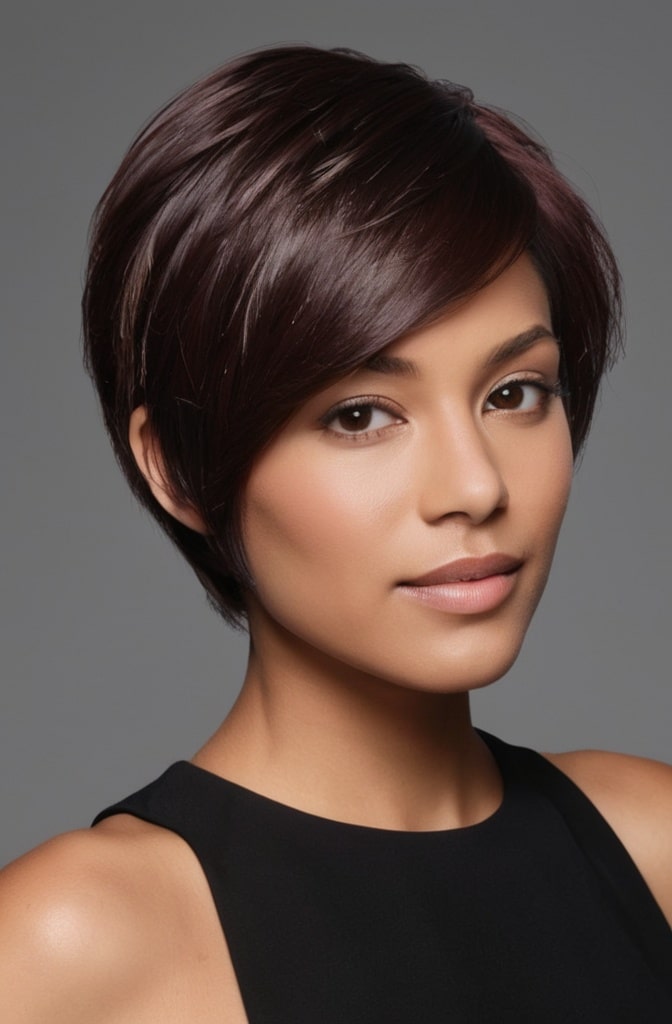
The tapered wolf cut creates a fascinating silhouette by gradually narrowing from voluminous top layers to closely cropped ends, resulting in a distinctive triangular shape that’s widest at the crown and tapers dramatically toward the bottom. This architectural interpretation maintains the wolf cut’s characteristic disconnected layers through the crown and mid-lengths but incorporates progressive tapering that removes bulk and length from the ends, creating a silhouette that appears to defy gravity with its upward-focused volume. Many who find traditional wolf cuts too heavy at the bottom appreciate this variation that shifts the visual weight upward while creating a more streamlined overall shape.
What makes this tapered interpretation so effective is how it redistributes volume to create a completely different silhouette while maintaining the essential textured, lived-in quality that defines the wolf cut. The dramatic tapering toward the ends creates a lightweight, airy quality that allows for incredible movement, with the hair appearing almost weightless as it moves. Styling typically emphasizes this upward-focused volume, with products and techniques that create maximum lift at the crown while allowing the tapered ends to move freely. Many find this variation particularly flattering as it draws attention upward toward the eyes while creating a sleek profile that works beautifully with more angular face shapes. This architectural approach demonstrates how the wolf cut can be reimagined beyond its original shape while maintaining its essential textured character.
39. Spiral-Layered Wolf Cut
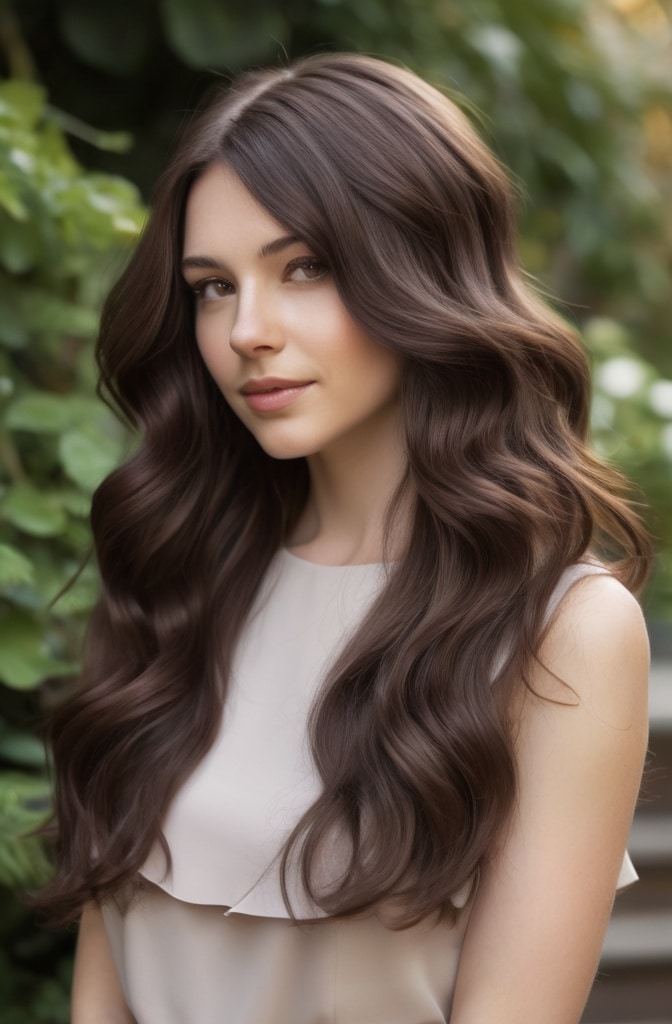
The spiral-layered wolf cut incorporates an innovative cutting technique where layers are cut in a spiral pattern around the head rather than in horizontal or vertical sections, creating extraordinary movement and dimension throughout. This specialized interpretation features layers that seem to twist and turn as they cascade down, with each section connecting to the next in a continuous spiral that creates natural movement no matter how the hair is styled. The result is a wolf cut with enhanced three-dimensional quality that appears to have natural, built-in waves even in straighter hair types. Many who find traditional layering techniques too predictable appreciate this unique approach that creates more organic, less structured results.
What makes this spiral-layered variation so distinctive is how it creates movement without requiring heat styling or product—the cut itself does the work by encouraging the hair to fall in a spiral pattern that mimics natural wave patterns. The technique involves cutting the hair by following a spiral pattern from the crown outward, with each section connecting to the next to create continuous flow throughout the style. Styling typically involves enhancing this natural movement with scrunching techniques and lightweight products that define the spiral effect without weighing it down. Many women report that this specific cutting approach has transformed their styling routine, as the hair naturally falls into place with minimal effort due to the ingenious way the layers interconnect throughout the cut.
40. Faux-Hawk Wolf Cut

The faux-hawk wolf cut creates a rebellious, rock-inspired silhouette by concentrating extreme volume and height along the center of the head while keeping the sides sleeker and more controlled. This edgy interpretation maintains longer length through the central section from forehead to nape—styled upward for maximum height—while the side sections feature the wolf cut’s signature disconnected layers but are styled closer to the head to create that distinctive mohawk-inspired silhouette. The result is a bold, statement-making style that can be dialed up for nights out or toned down for more conservative environments. Many who appreciate punk and rock aesthetics but need versatility for professional settings love this adaptable variation.
What makes this faux-hawk interpretation so clever is its chameleon-like versatility—the cut itself incorporates all the elements needed to create the dramatic center-focused volume, but can also be styled conventionally when the occasion requires. The key to this variation lies in the strategic placement of layers, with the central section cut to maximize vertical volume potential while the side sections maintain enough length to be styled either close to the head or with the typical wolf cut texture. Styling for the full faux-hawk effect typically involves volumizing products applied at the roots of the center section, followed by blow-drying upward and finishing with strong-hold texturizing products to maintain the height. This variation has become particularly popular among those with bold personal style who need to navigate between creative and conventional environments.
41. Ribbon-Highlighted Wolf Cut
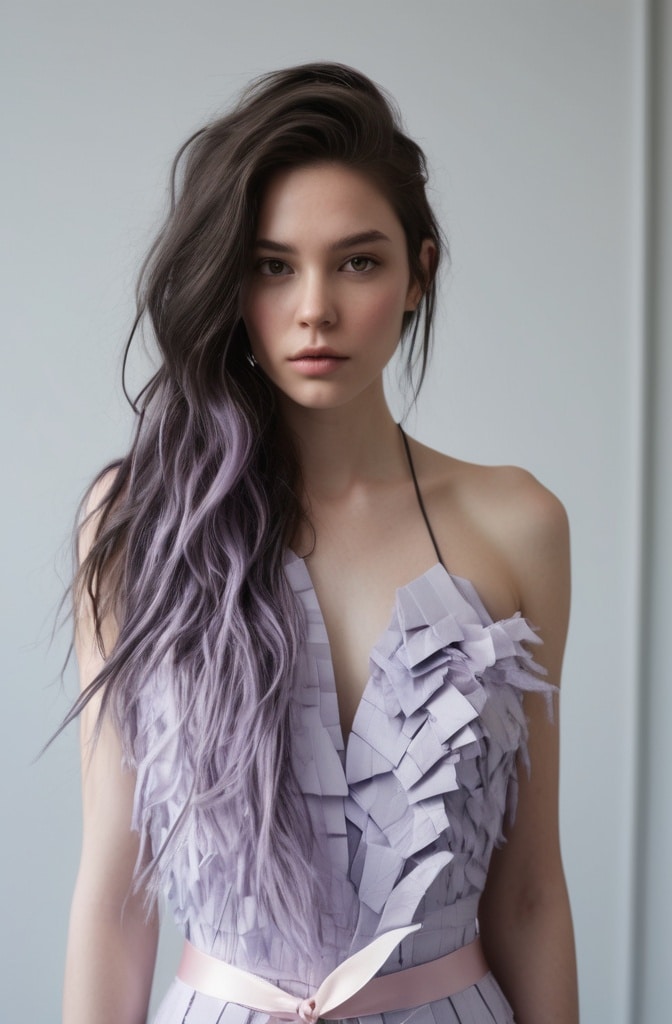
The ribbon-highlighted wolf cut features distinctive “ribbons” of lighter color woven vertically through the layers, creating the illusion of natural light reflection throughout the style. This dimensional interpretation incorporates strategically placed highlights—typically one to two shades lighter than the base color—that run from root to tip in ribbon-like sections that follow the cut’s natural fall pattern. Unlike traditional highlighting techniques that work horizontally, these vertical ribbons enhance the wolf cut’s disconnected layers by following their natural movement patterns. Many who want subtle dimension without all-over lightening appreciate this targeted approach that creates natural-looking brightness with minimal maintenance.
What makes this ribbon-highlighted variation so effective is how the placement of color actually enhances the cut’s natural movement, with the lighter sections catching light as the hair moves to create the illusion of inner luminosity. The highlighting technique typically involves hand-painting vertical sections that correspond with the wolf cut’s natural separation points, ensuring the color placement enhances rather than fights against the cut’s intended movement. This approach creates dimension without the harsh grow-out line associated with traditional foil highlights, as the vertical application mimics how hair would naturally lighten from sun exposure. Many women find this interpretation particularly flattering as it creates brightness around the face where it’s most enhancing while maintaining depth through other areas for a naturally dimensional effect.
42. Wolf Cut Shullet (Shag-Mullet Hybrid)

The wolf cut shullet takes the wolf cut concept even further toward its mullet roots while incorporating shag elements to create the ultimate textured hybrid that celebrates all three iconic cuts simultaneously. This no-holds-barred interpretation features the shortest layers concentrated at the crown and around the face—signature shag elements—with dramatically longer sections at the nape that create the distinctive mullet silhouette, all united through the wolf cut’s disconnected layering technique. The result is an unabashedly bold style that creates extraordinary contrast between the shortest and longest pieces while maintaining a cohesive overall shape. Many texture enthusiasts who appreciate vintage-inspired cuts with modern execution are drawn to this maximalist approach that refuses to be categorized.
What makes this triple-hybrid interpretation so fascinating is how it honors the shared DNA between these three iconic textured cuts while creating something that feels entirely fresh and contemporary. The key difference from a standard wolf cut lies in the more extreme length differential between the top and back sections, with the crown and sides cut significantly shorter to emphasize the mullet-like length at the nape. Styling typically involves enhancing this contrast, with volumizing products applied to the shorter top sections for maximum height and movement while the longer back sections remain sleeker to showcase their length. This variation has become particularly popular among those who appreciate how contemporary styling has reimagined vintage cuts through a modern lens, creating looks that feel both nostalgic and thoroughly current.
43. Precision-Cut Wolf Layers
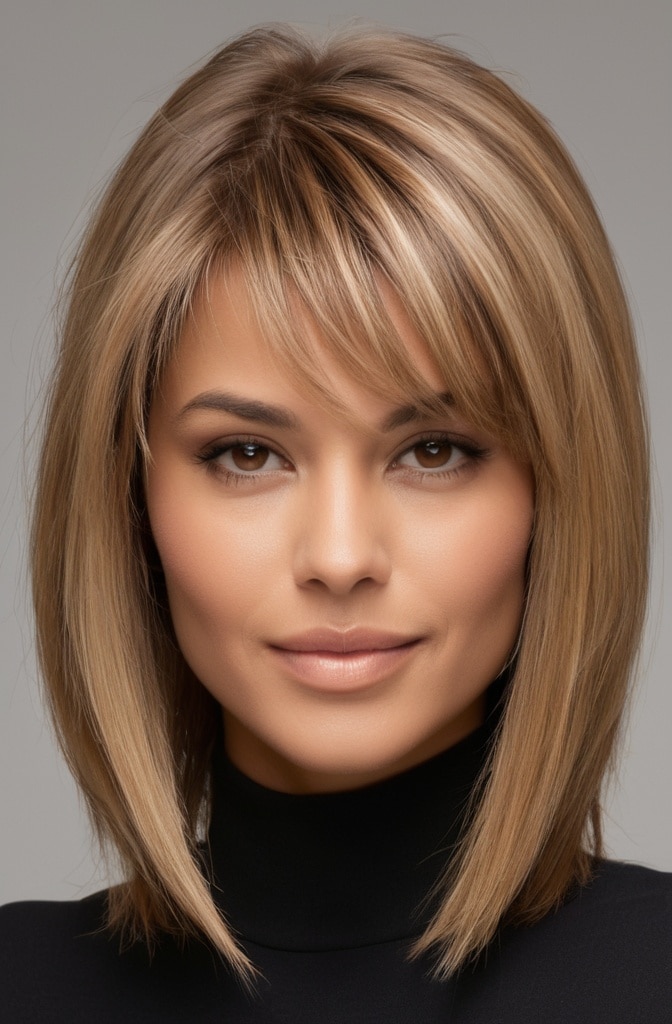
The precision-cut wolf layers offer a more polished, geometric interpretation of the traditionally tousled style, with each layer cut with laser-like precision rather than the typical textured, point-cut approach. This sophisticated variation maintains the wolf cut’s signature silhouette and disconnected layers but executes them with clean, sharp lines that create a more architectural, less deliberately messy result. The precise edges of each layer create fascinating lines and angles throughout the style that catch light differently than textured ends, resulting in a more refined version of the wolf cut that appeals to those who appreciate the shape but prefer a more polished aesthetic. Many professionals who want the wolf cut’s distinctive silhouette without its sometimes too-casual appearance are drawn to this elegantly executed interpretation.
What sets this precision-layered variation apart is its elegant balance between the wolf cut’s inherently casual shape and a more sophisticated execution that elevates the style from trendy to timeless. The cutting technique involves sectioning the hair with exceptional precision and cutting each layer with blunt, clean lines rather than the point cutting or razor techniques typically used to create texture in traditional wolf cuts. Styling often emphasizes this precision, with smoothing products and techniques that showcase the clean lines and deliberate disconnection between layers rather than creating the tousled texture associated with standard wolf cuts. Many find this interpretation particularly versatile, as it can be styled sleek for professional environments or tousled with texturizing products for more casual occasions while maintaining its fundamentally refined character.
44. Permed Wolf Cut
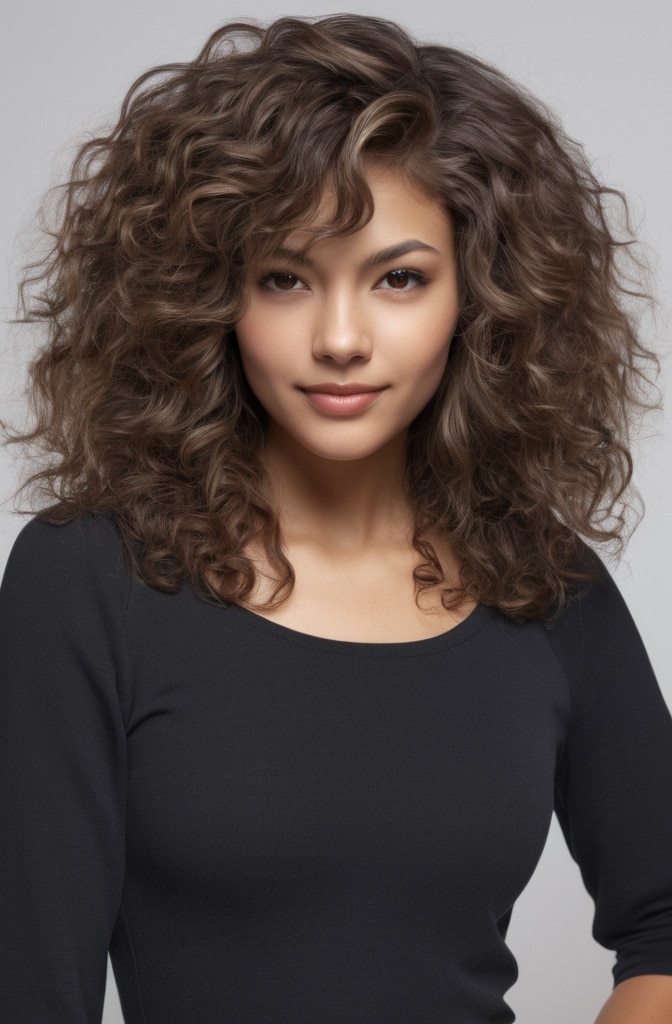
The permed wolf cut combines chemical texturizing with the wolf cut’s layered structure to create permanent waves and curls that enhance the style’s inherent volume and movement. This texture-maximizing interpretation uses modern perming techniques—far gentler than old-school perms—to create customized curl patterns throughout the wolf cut’s layers, with different-sized rods used to create varied texture from roots to ends. The result is a wolf cut with built-in texture that maintains its voluminous, layered appearance even without styling products or heat tools. Many who love the wolf cut’s tousled look but lack natural texture appreciate this low-maintenance approach that ensures the style always looks intentionally textured, even straight out of bed.
What makes this permed variation so practical is how it creates permanent texture that enhances the wolf cut’s signature disconnected layers, ensuring they always separate naturally without requiring daily styling. Modern perming solutions are formulated to create softer, more natural-looking waves rather than the tight curls associated with vintage perms, resulting in texture that looks effortlessly lived-in rather than obviously processed. Styling becomes remarkably simple—typically just requiring curl-enhancing cream scrunched into damp hair followed by air-drying, with no heat tools necessary to achieve the wolf cut’s characteristic tousled texture. Many busy women find this interpretation particularly liberating, as it ensures their wolf cut always looks intentionally textured even on days when styling time is limited or non-existent.
45. Half-Shaved Wolf Cut

The half-shaved wolf cut creates dramatic contrast by combining a fully shaved section on one side with flowing wolf cut layers on the opposite side, resulting in a bold asymmetrical look that makes an unmistakable statement. This fearless interpretation typically features one side clippered very short—anywhere from a #1 guard to a #4 depending on desired length—while the opposite side maintains the wolf cut’s signature layered texture from crown to ends. The contrast between the exposed scalp or ultrashort hair on one side and the voluminous, flowing texture on the other creates fascinating visual tension and allows for incredible styling versatility. Many who view their hair as an extension of their artistic expression appreciate this boundary-pushing variation that combines elements of both extremely short and mid-length styles.
What makes this half-shaved interpretation so captivating is its unapologetic embrace of extremes—no attempt to blend or soften the transition between the shaved section and the flowing wolf cut side, just a clean line of demarcation that creates two distinct looks in one cut. This variation allows for fascinating styling options, as the hair can be parted to completely reveal the shaved section for maximum impact or styled to partially cover it for situations where a more conservative appearance is required. Maintenance involves regular trimming of the shaved section to maintain the crisp contrast with the longer side, but many find this well worth the effort for the striking effect and the cooling benefit of having less hair on one side. This bold interpretation has become particularly popular among those in creative fields who appreciate having a style that makes a definitive statement about their willingness to embrace unconventional beauty standards.
46. Rooted Neon Wolf Cut
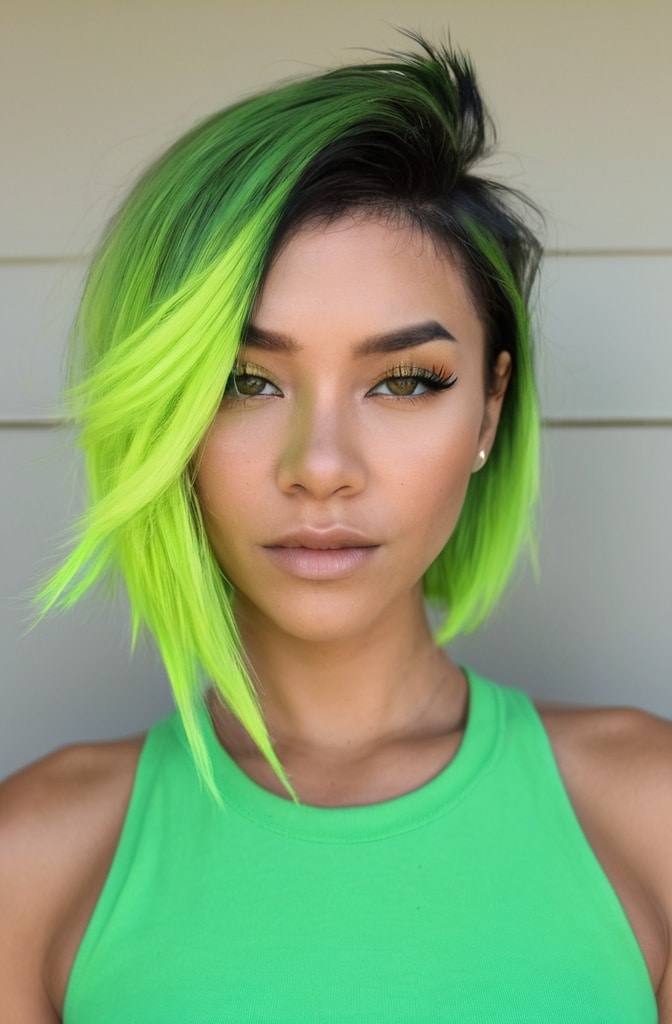
The rooted neon wolf cut combines natural-looking darker roots with vibrant, electric colored lengths to create a high-contrast look that emphasizes the wolf cut’s dimensional layers. This bold color interpretation maintains natural or darker-toned roots for the first 1-2 inches, then transitions dramatically to neon pink, electric blue, acid green, or vivid purple through the mid-lengths and ends. The wolf cut’s disconnected layers showcase this color contrast perfectly, with the darker roots grounding the style while the neon lengths create extraordinary visual impact with every movement. Many who want to experiment with vivid colors while maintaining some connection to their natural shade appreciate this approach that creates a deliberately grown-out appearance from the start.
What makes this rooted neon variation so clever is how it embraces grow-out as part of the design rather than something requiring immediate correction, extending time between color appointments while creating a striking gradient effect. The contrast between the deeper roots and vibrant lengths enhances the wolf cut’s natural movement, as the color shift emphasizes each layer’s disconnection from the others. This color technique also allows for more dimension within the neon sections, with subtle variations in the bright shade creating depth throughout the mid-lengths and ends. Many find this interpretation particularly practical despite its bold appearance, as the natural roots mean new growth blends seamlessly into the existing color story rather than creating an obvious line of demarcation that demands immediate attention.
47. Razor-Cut Wolf Layers

The razor-cut wolf layers create extraordinary feathery texture throughout the style, with each piece looking whisper-thin and ethereally light compared to the more substantial layers of traditionally scissors-cut versions. This delicate interpretation uses a straight razor to remove weight and create wispy ends throughout, resulting in layers that move like butterfly wings with the slightest breeze or head turn. The razor cutting technique creates natural-looking texture even in the straightest hair types, as each strand ends with a slightly different length, creating built-in movement without requiring texturizing products. Many with finer hair appreciate how this technique creates the illusion of fullness through texture rather than bulk, making it ideal for those who want the wolf cut silhouette without heaviness.
What makes this razor-cut variation so effective is how it creates movement through cutting technique alone, with each razor stroke removing weight and creating that coveted lived-in texture that defines the wolf cut aesthetic. The resulting layers appear almost transparent at their ends, creating beautiful light diffusion throughout the style that softens the sometimes harsh disconnection of traditional wolf cuts. Styling typically requires minimal product—just lightweight texturizing spray or mousse to enhance the natural movement created by the razor technique. Many find this interpretation particularly flattering as it creates a softer, more romantic version of the wolf cut that maintains the style’s essential character while adding an element of delicate femininity through those whisper-thin, feathery ends.
48. Volumized Crown Wolf Cut

The volumized crown wolf cut takes the style’s signature height to extraordinary new levels by incorporating specialized cutting and styling techniques that create dramatic elevation at the top of the head. This amped-up interpretation features extremely short, steeply angled layers throughout the crown area that stand almost perpendicular to the scalp when styled, creating a voluminous cushion that transitions to the longer face-framing and back layers. The result is a head-turning silhouette that maximizes height where it’s most flattering while maintaining the wolf cut’s characteristic textured lengths through the mid-sections and ends. Many who love the wolf cut’s volume but want to push it to more dramatic proportions appreciate this boundary-pushing variation that creates statement-making height.
What makes this volumized crown interpretation so impactful is its perfect balance between dramatic proportion and wearable shape—the extreme volume is concentrated exactly where it’s most flattering while the rest of the cut maintains more conservative proportions. The cutting technique involves creating extremely short, almost vertical layers throughout the crown that provide the structure needed to achieve that dramatic height when styled. Products with strong volumizing properties are essential for this variation, with root-lifting mousses or powders applied generously throughout the crown area before blow-drying upward with a round brush or diffuser. Many find this interpretation particularly effective for creating the illusion of length in rounder face shapes, as the vertical volume draws the eye upward and creates elongating lines that balance fuller facial features.
49. Lived-In Balayage Wolf Cut

The lived-in balayage wolf cut combines hand-painted color with textured layers to create a low-maintenance, naturally sun-kissed effect that enhances the cut’s dimensional quality. This effortless interpretation features subtle balayage highlights—typically just two to three shades lighter than the base color—placed strategically throughout to mimic natural lightening patterns. The color technique’s grow-out friendly nature pairs perfectly with the wolf cut’s intentionally undone aesthetic, resulting in a style that actually looks better as it evolves over time. Many busy professionals appreciate this combination’s minimal upkeep requirements, as both the color and cut are designed to grow out seamlessly without frequent salon visits.
What makes this balayaged variation so practical is how the color placement enhances the wolf cut’s natural movement while requiring minimal maintenance—the hand-painted technique creates soft transitions without harsh lines of demarcation, meaning regrowth blends beautifully rather than creating obvious contrast. The highlights are typically concentrated around the face and on the uppermost layers where the sun would naturally hit, creating brightness in the most flattering areas while maintaining depth elsewhere for dimension. Styling typically involves enhancing natural texture with air-drying techniques and lightweight products that won’t dull the dimensional color. Many women find this interpretation particularly liberating, as it allows them to maintain a fashion-forward style without the commitment of frequent salon appointments, with both the cut and color designed to evolve gracefully over time.
50. Curtained Wolf Cut
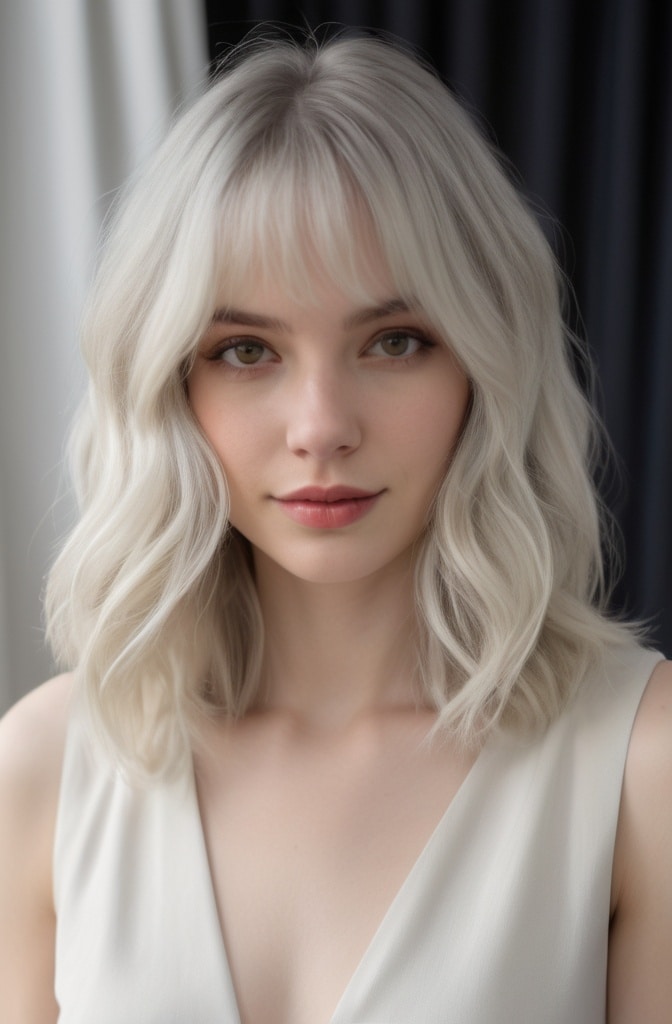
The curtained wolf cut creates a face-framing focal point by incorporating dramatically longer sections at the front that can be worn parted down the middle like curtains or swept to the side for asymmetrical drama. This face-focused interpretation features the wolf cut’s signature layered crown and back sections but maintains significantly longer pieces—often chin-length or below—at the very front that create a distinctive framing effect around the face. These longer front sections contrast beautifully with the more textured crown layers, creating interesting juxtaposition between lengths while drawing attention to the eyes and cheekbones. Many who want to highlight their facial features while maintaining the wolf cut’s textured crown and back appreciate this variation that creates a perfect frame for the face.
What makes this curtained variation so flattering is how it combines the wolf cut’s face-slimming layering with the elongating effect of these longer front pieces, creating vertical lines that enhance virtually every face shape. The contrast between the textured crown and these sleeker, longer front sections creates beautiful dimension that makes this interpretation appear more complex and deliberately designed than standard wolf cuts. Styling options are particularly versatile, as these front curtain pieces can be worn center-parted for a symmetrical frame, swept dramatically to one side for asymmetrical effect, or even tucked behind the ears to reveal more of the face when desired. Many find this interpretation especially practical for growing out shorter styles, as the longer front sections provide that coveted face-framing effect while the back and crown continue to evolve into the wolf cut’s signature shape.
Conclusion
The wolf cut is a bold and versatile hairstyle that blends the edgy layers of a shag with the volume of a mullet, making it perfect for women who want a trendy, low-maintenance, and effortlessly cool look. Whether you prefer a soft and subtle version or a more dramatic, choppy style, the wolf cut can be customized to suit different hair textures, lengths, and personal aesthetics. With its rising popularity across social media and celebrity circles, it’s a go-to choice for anyone ready to embrace a confident, fashion-forward transformation.
